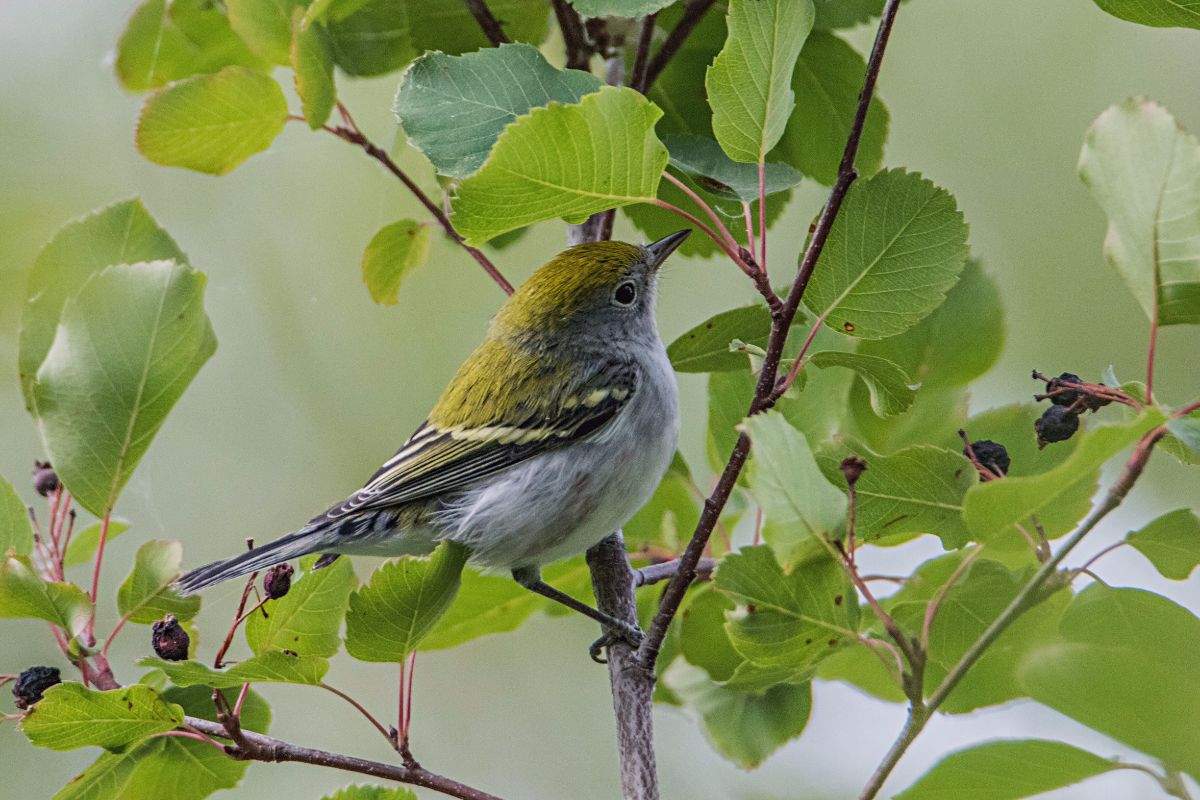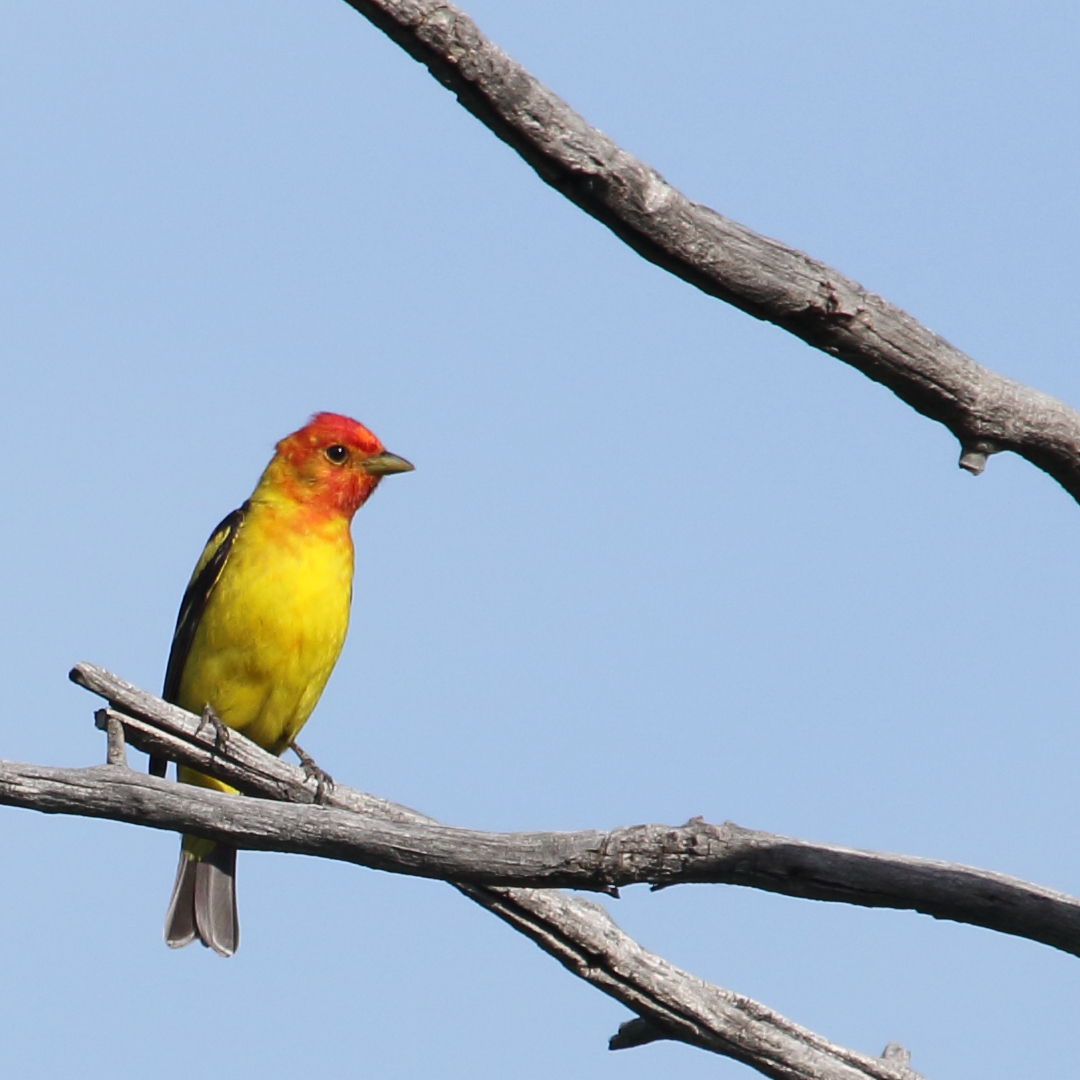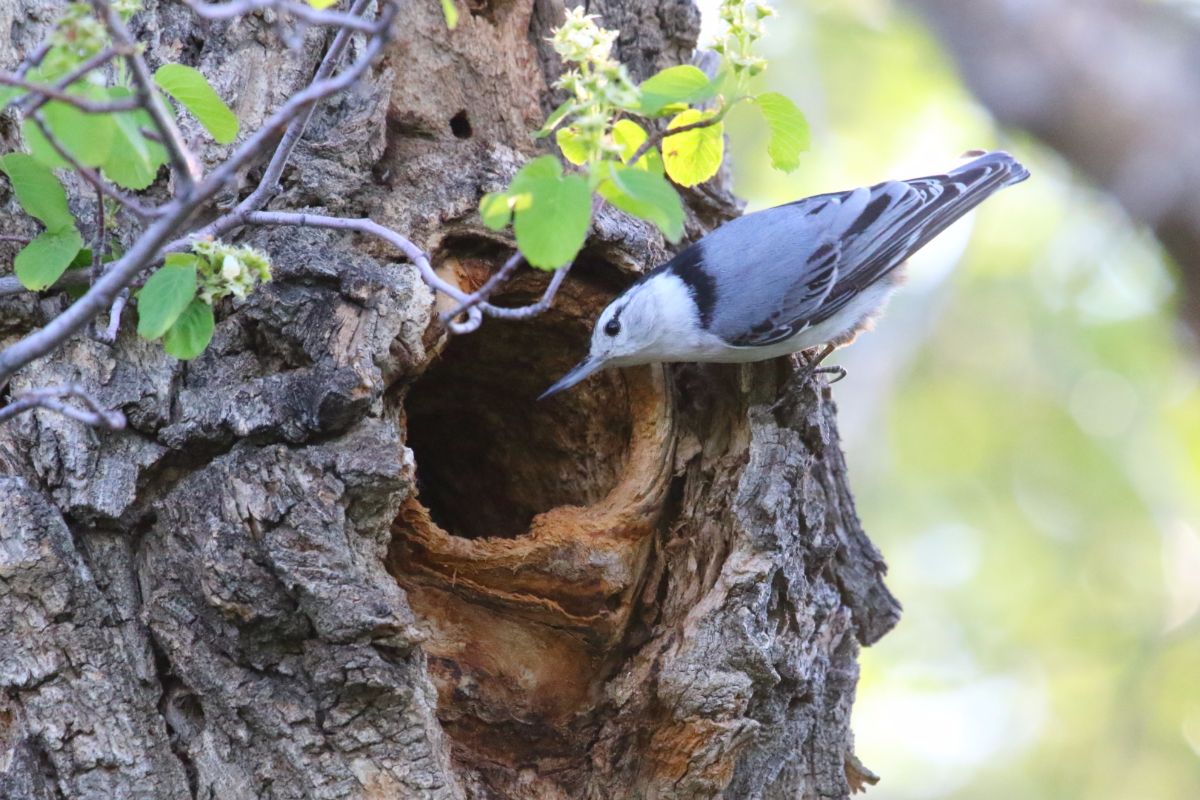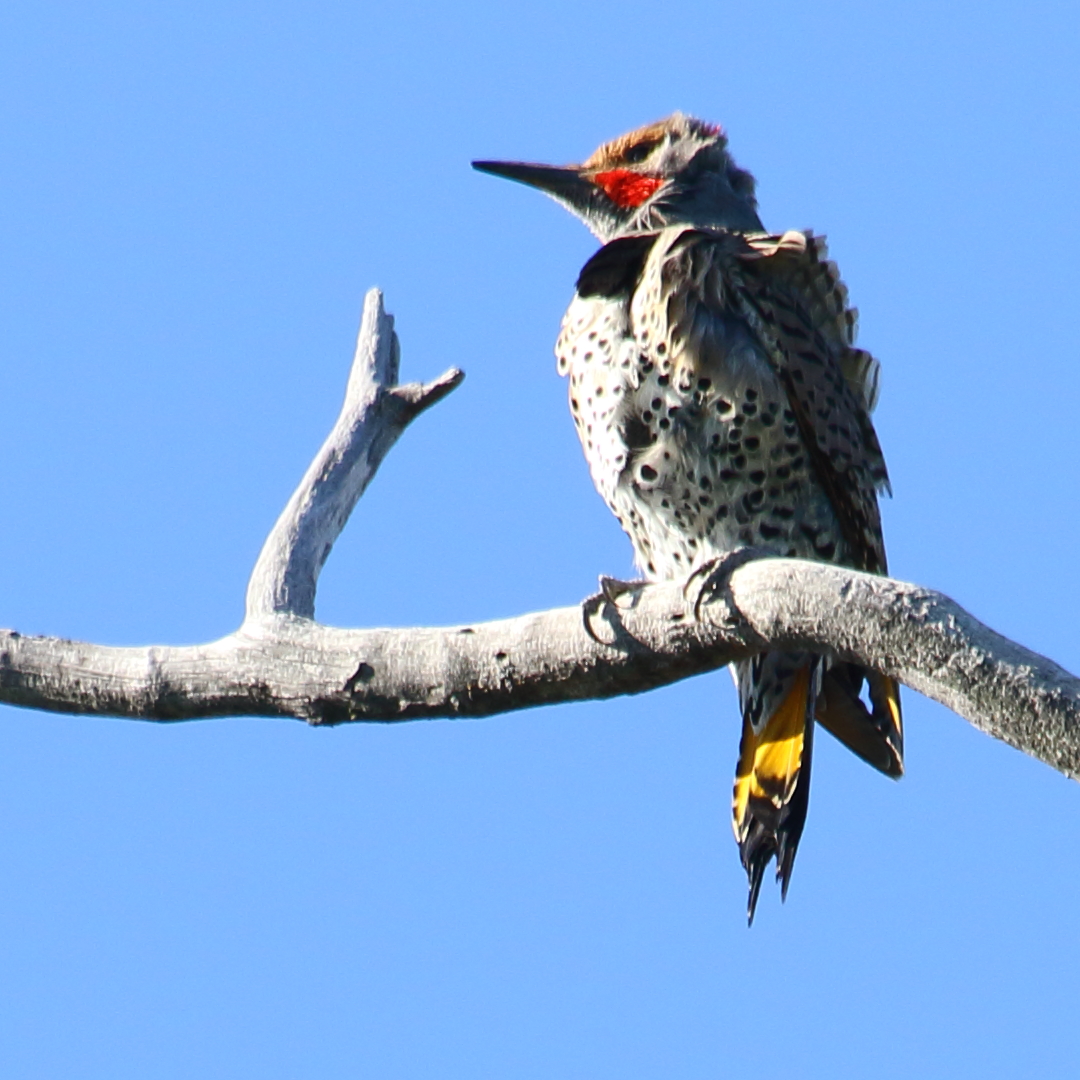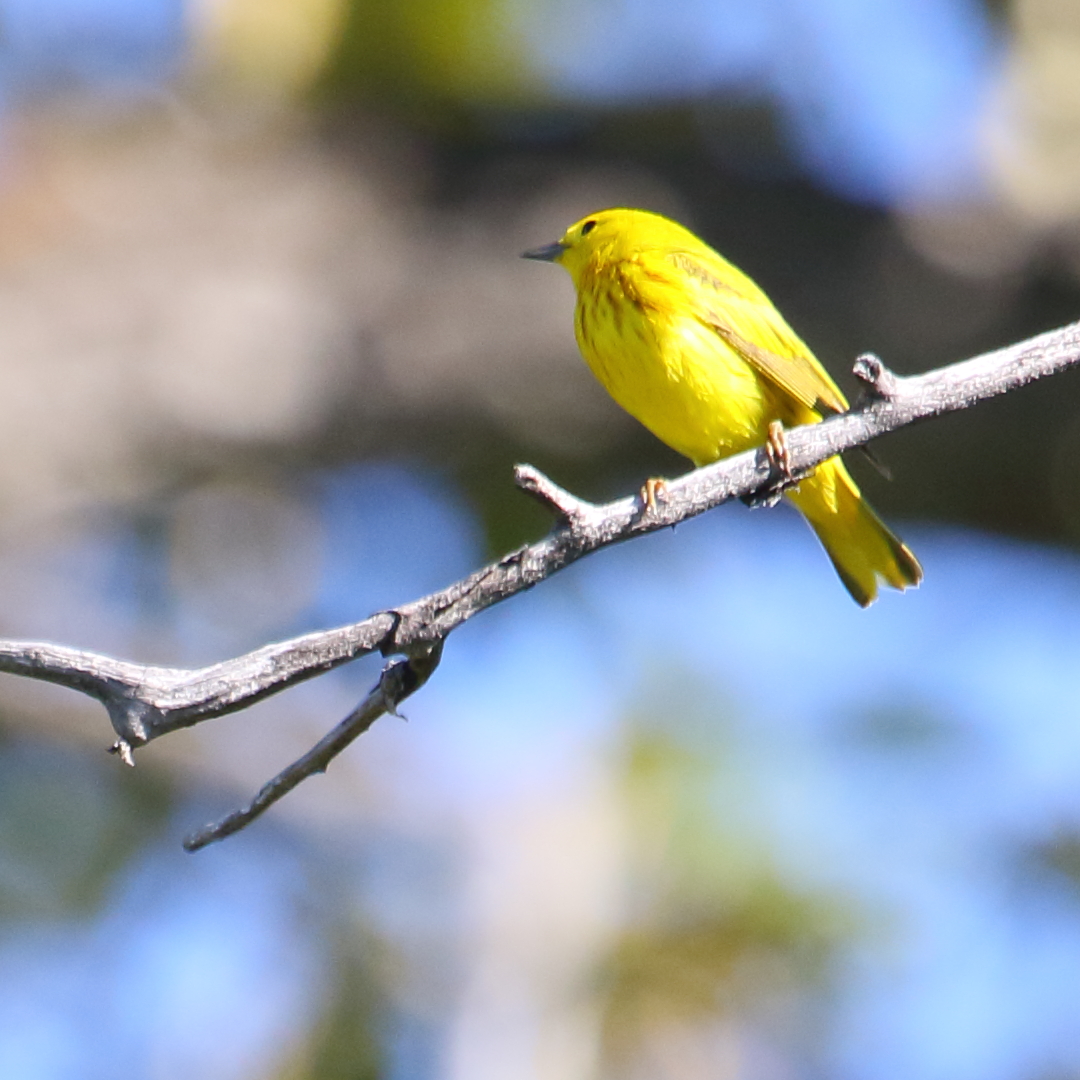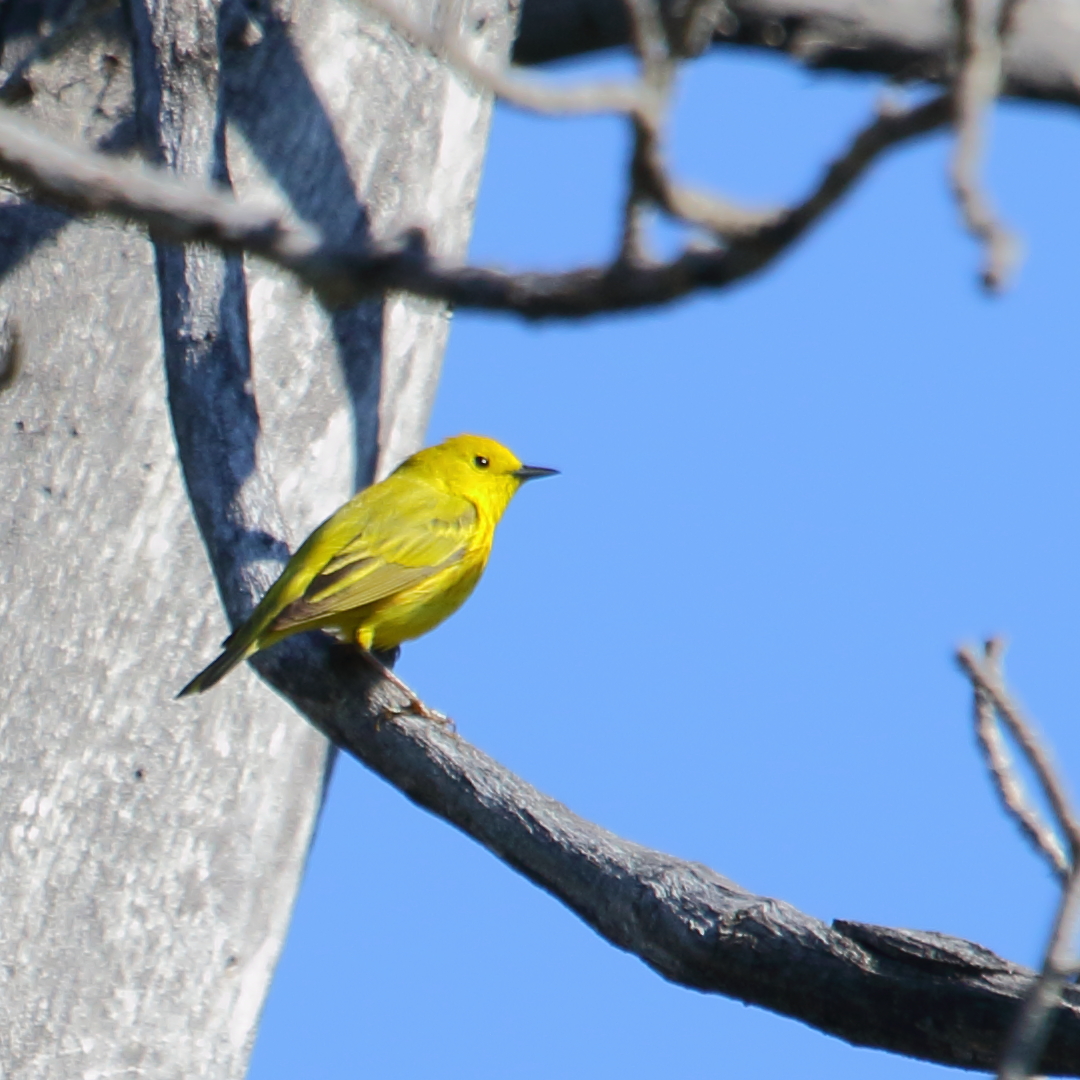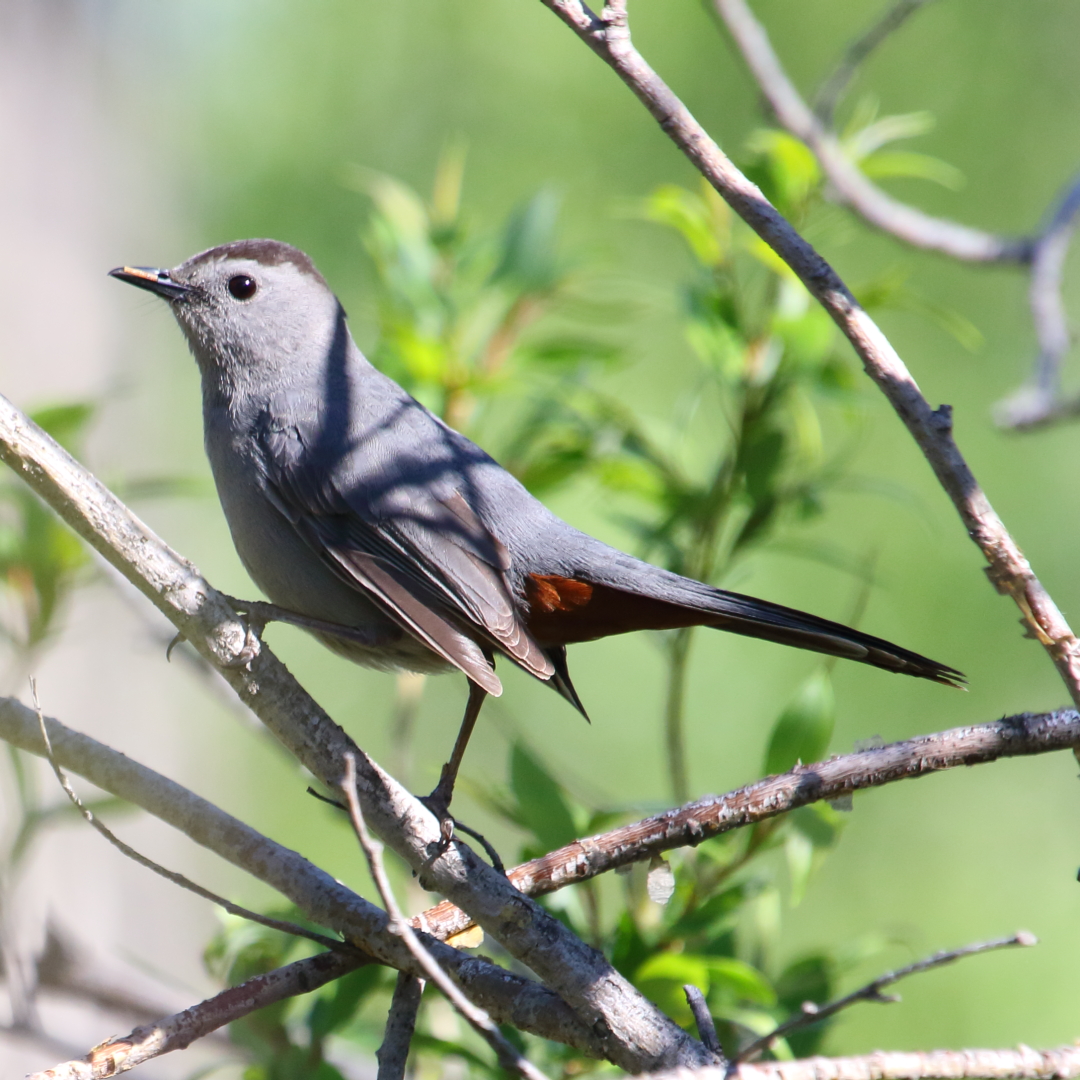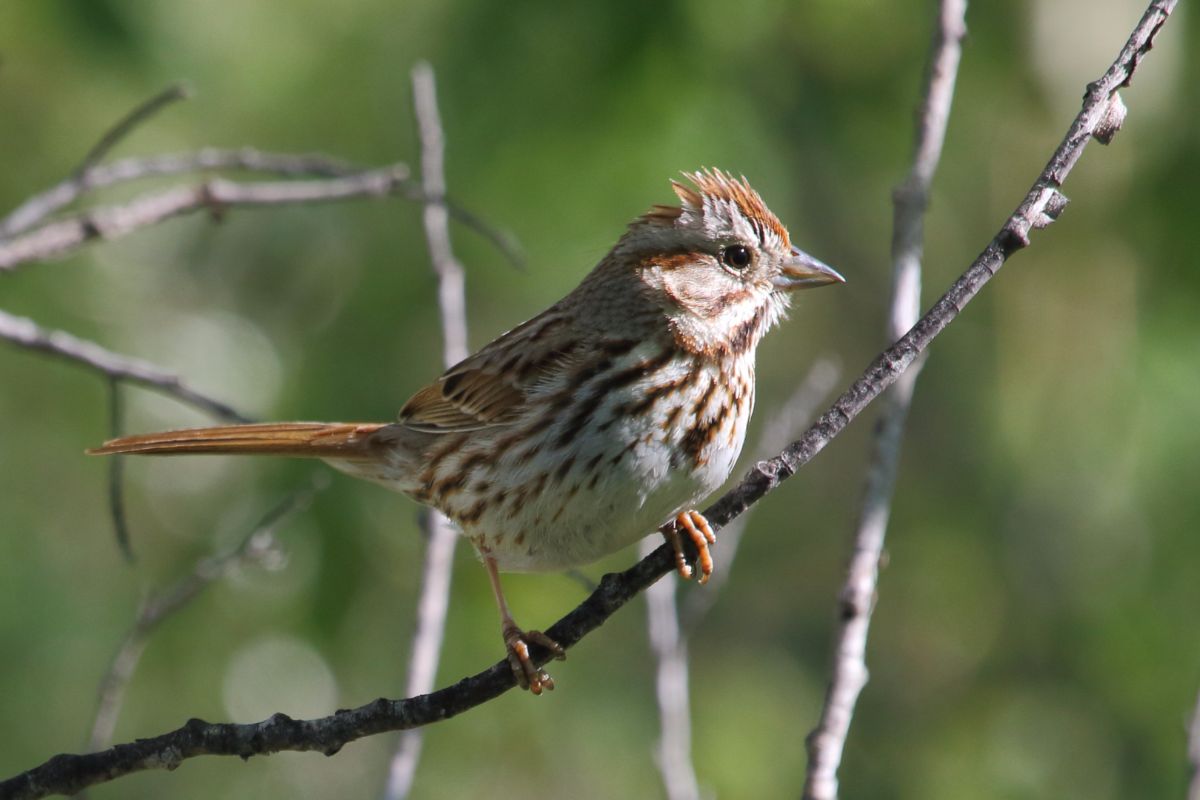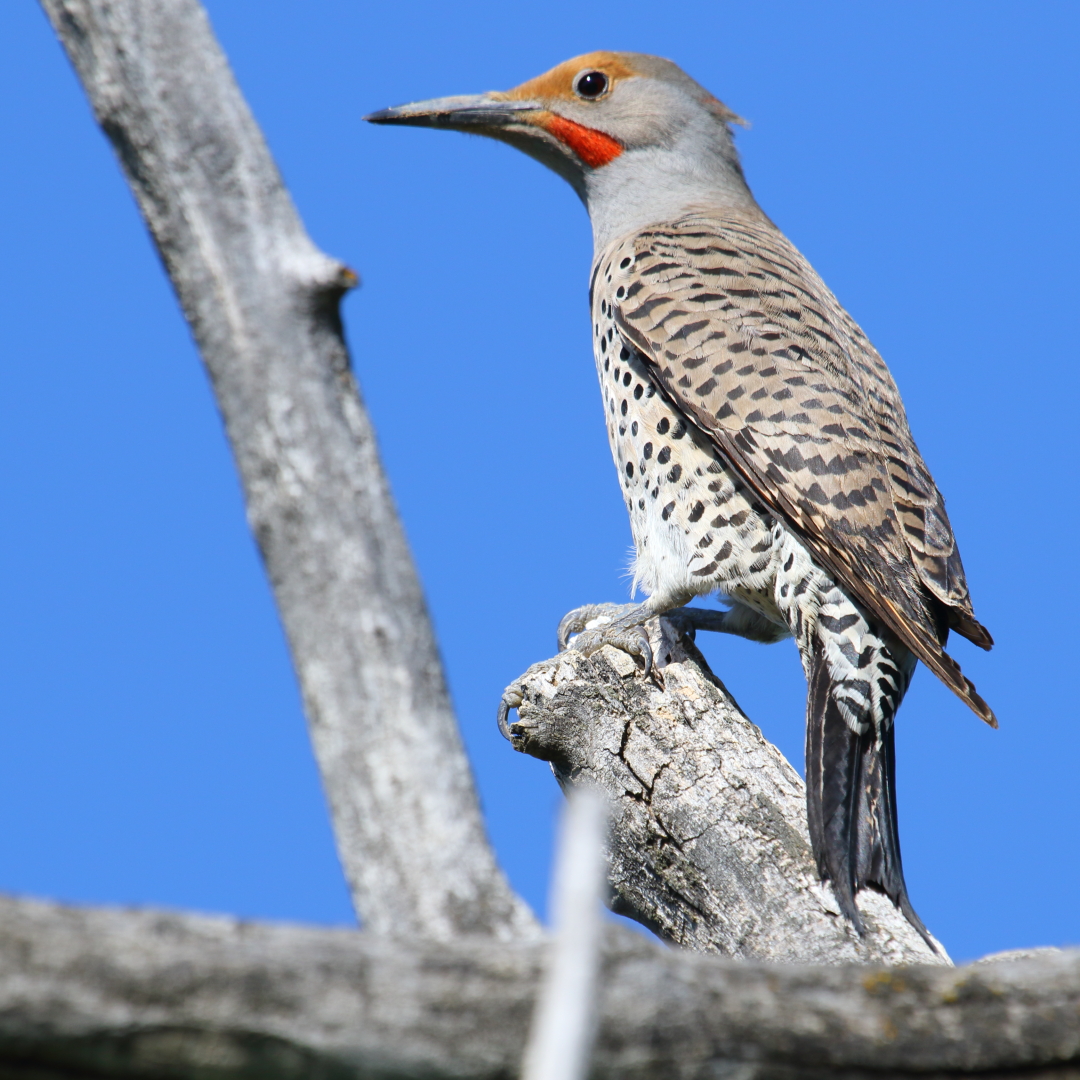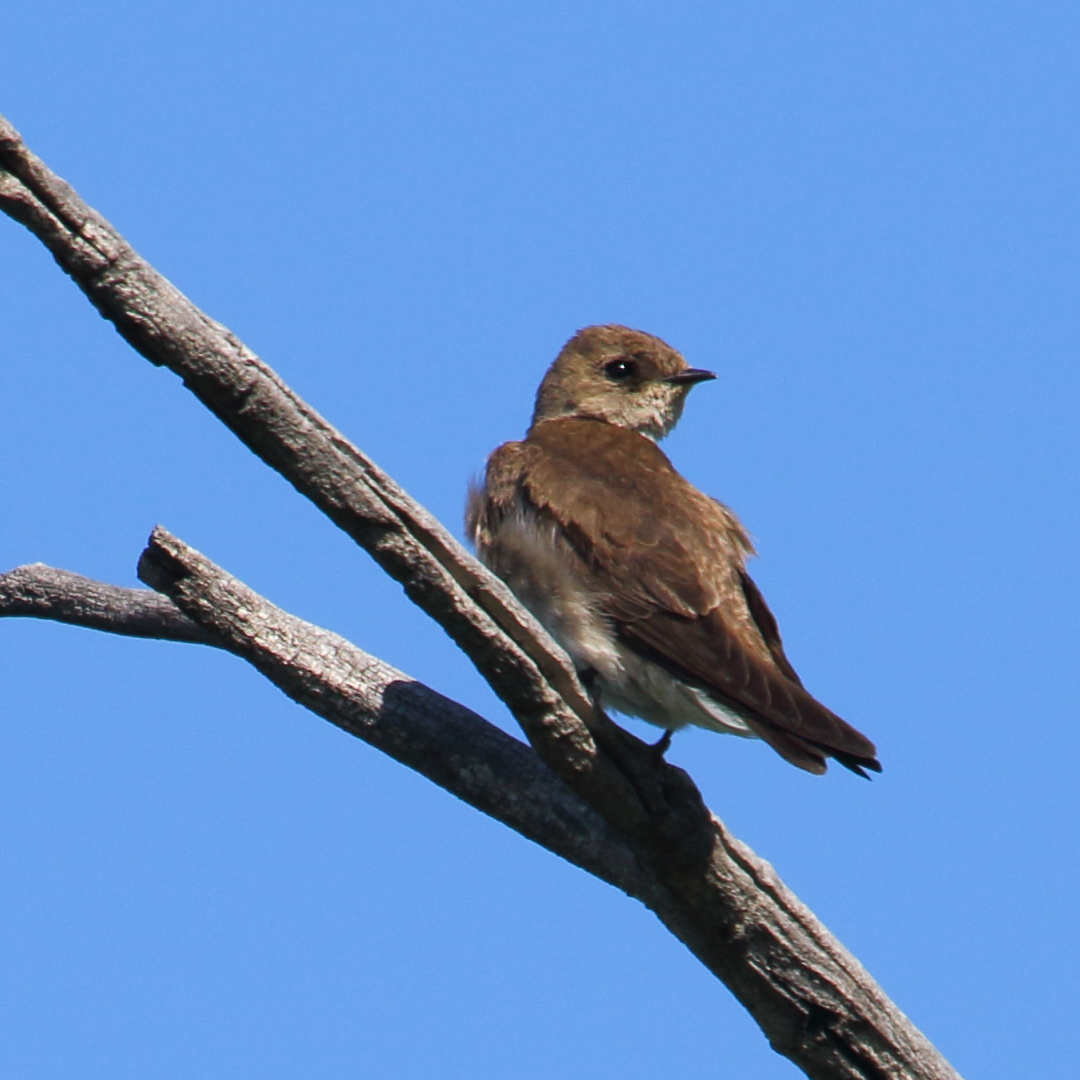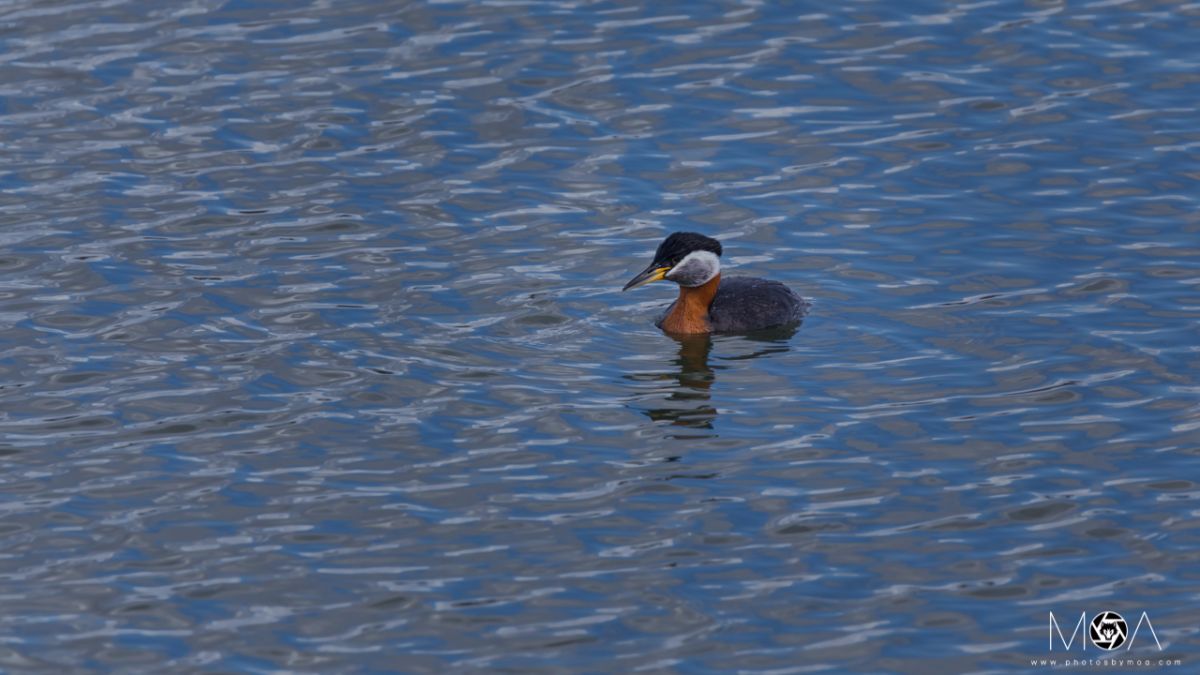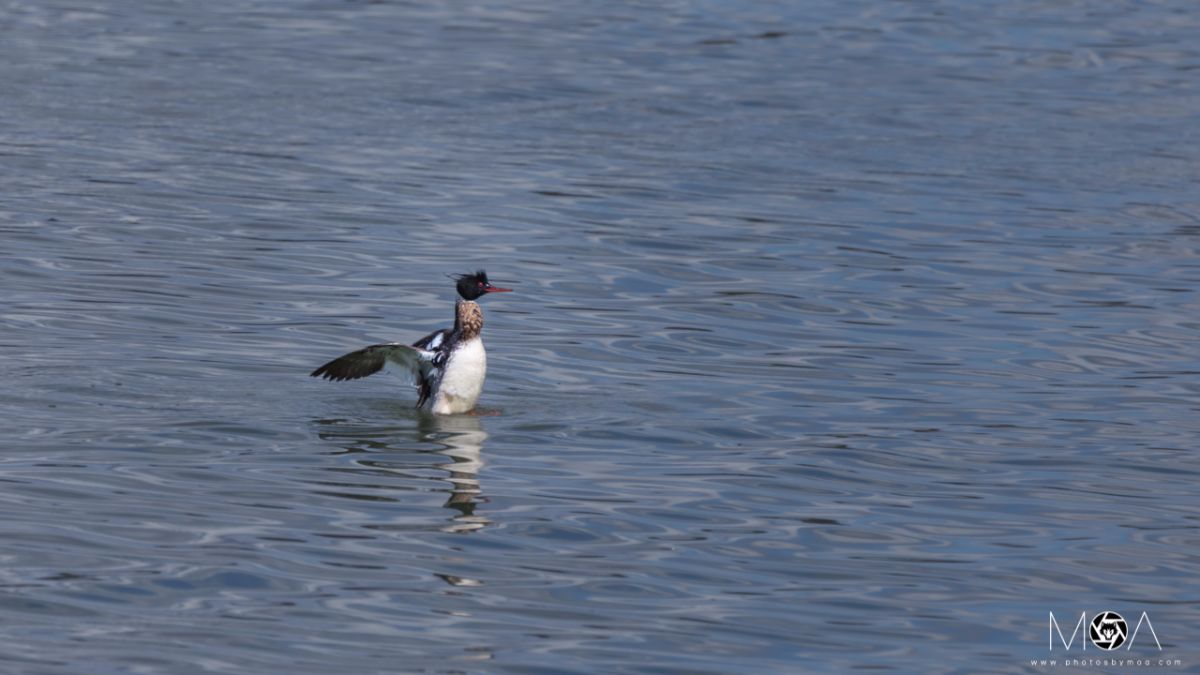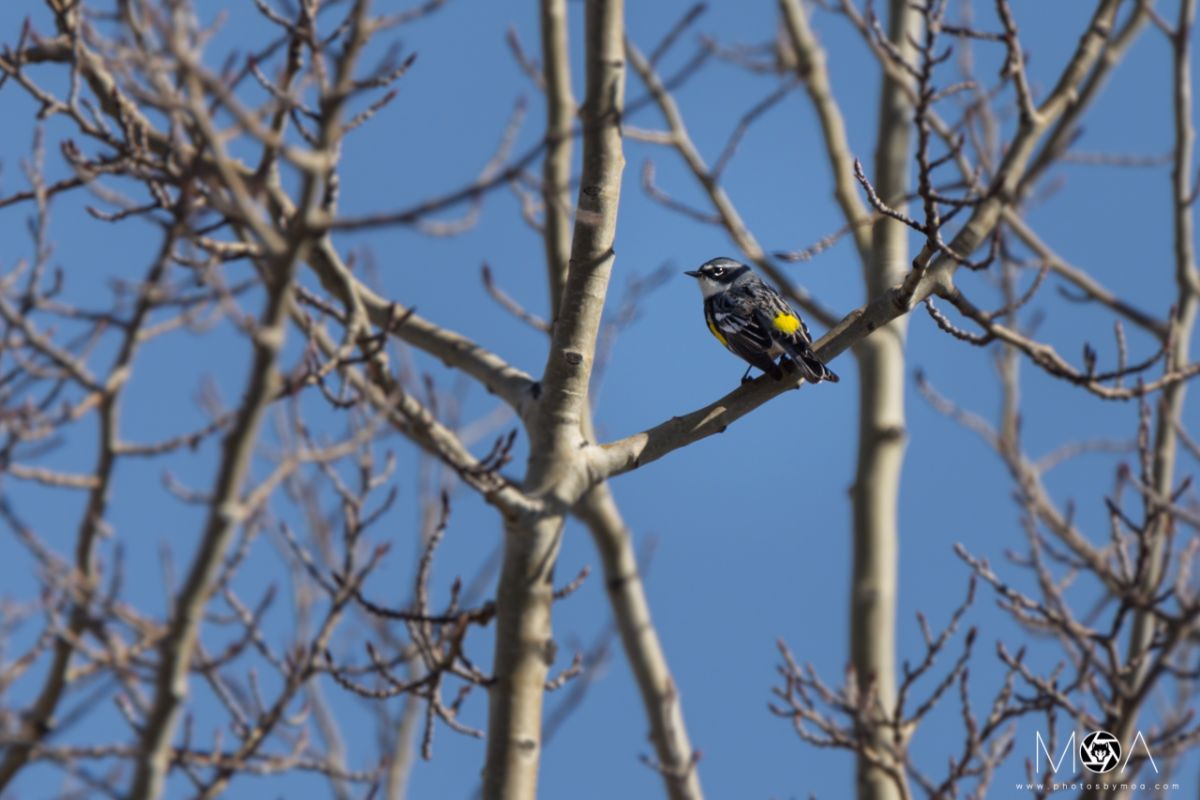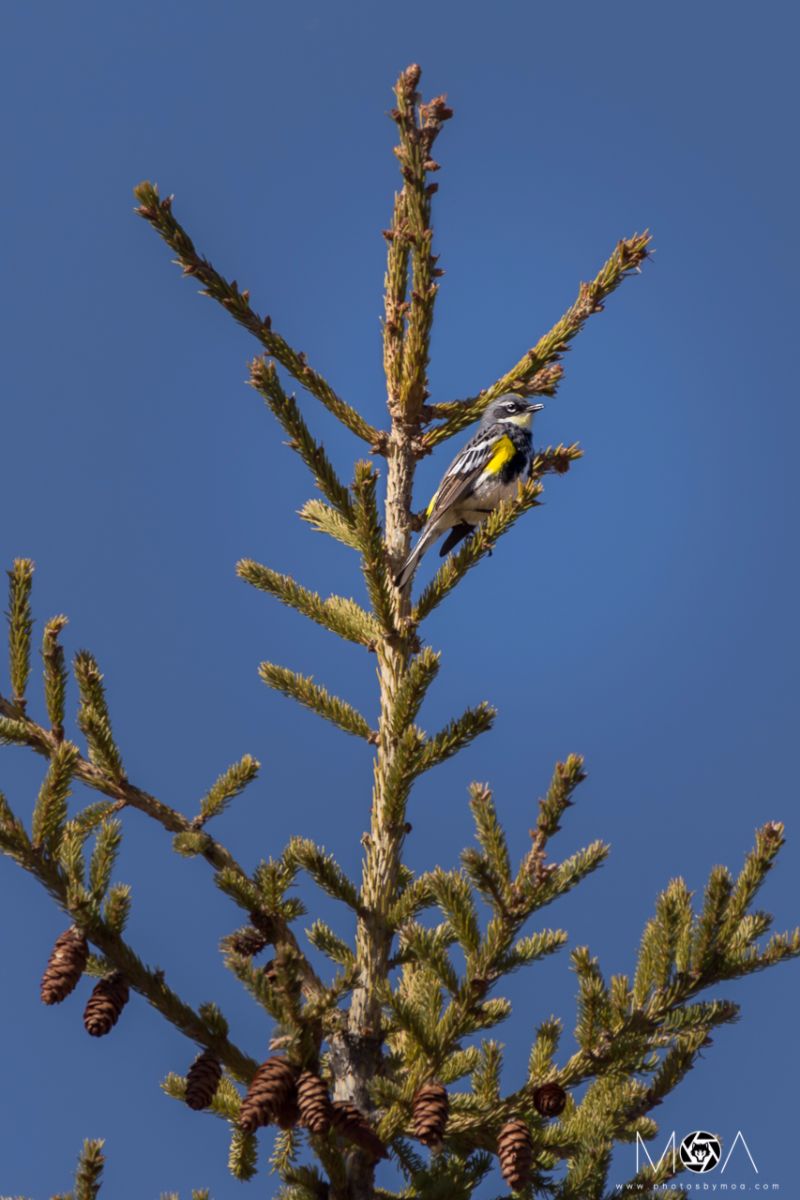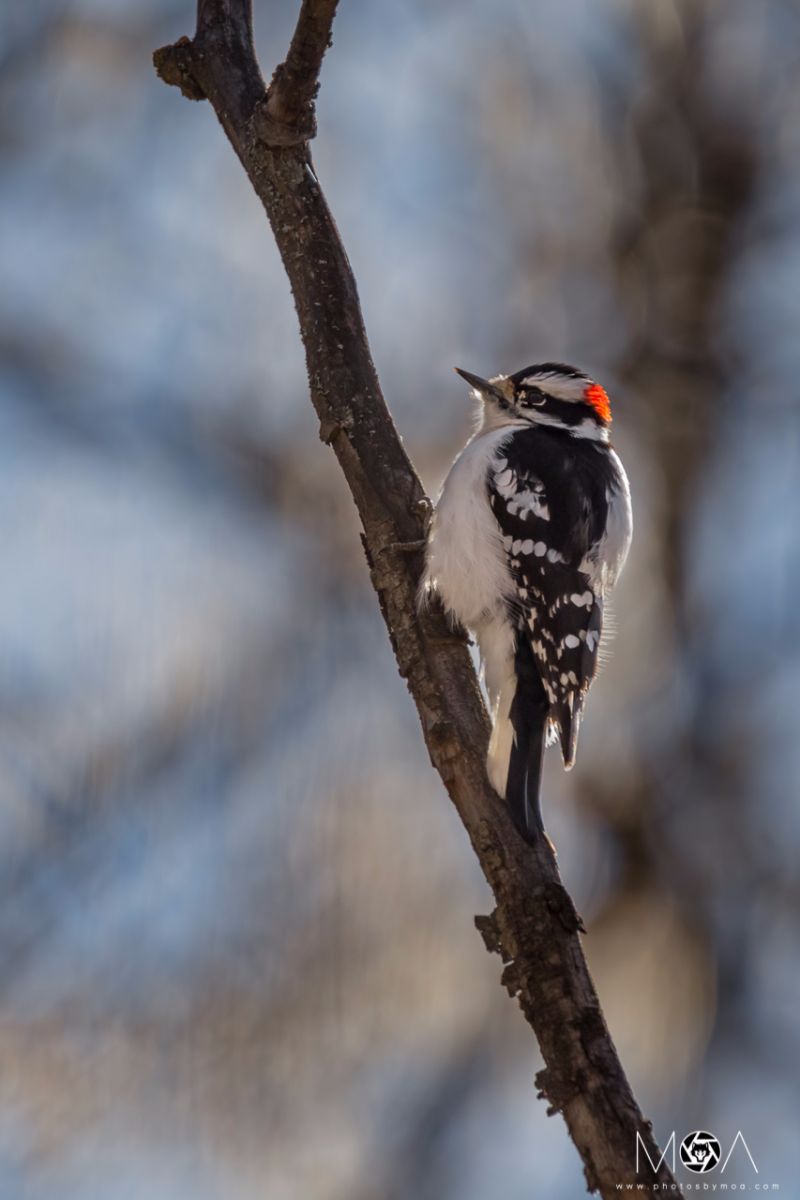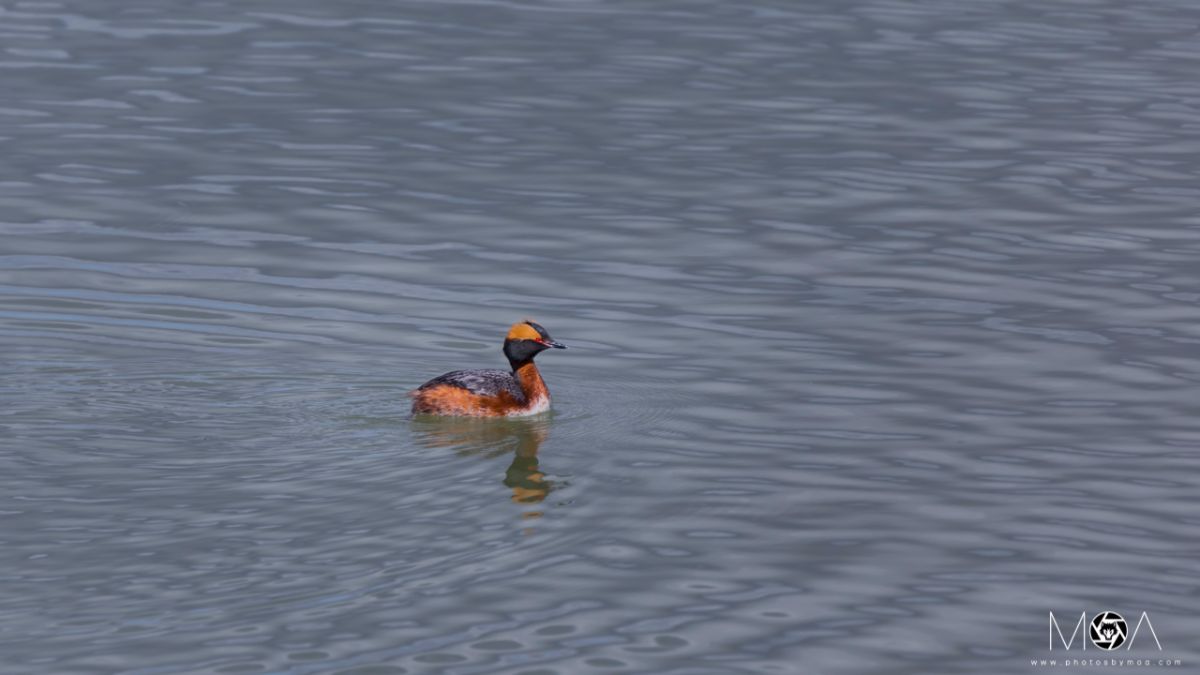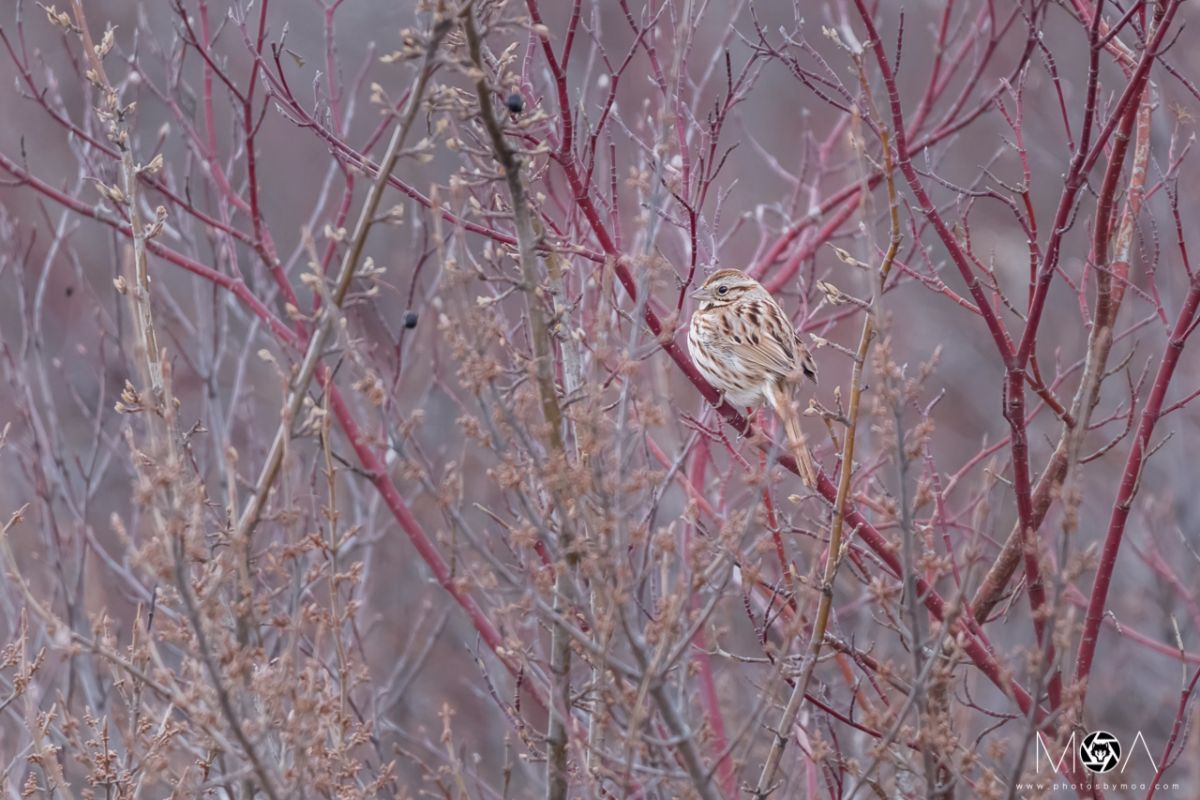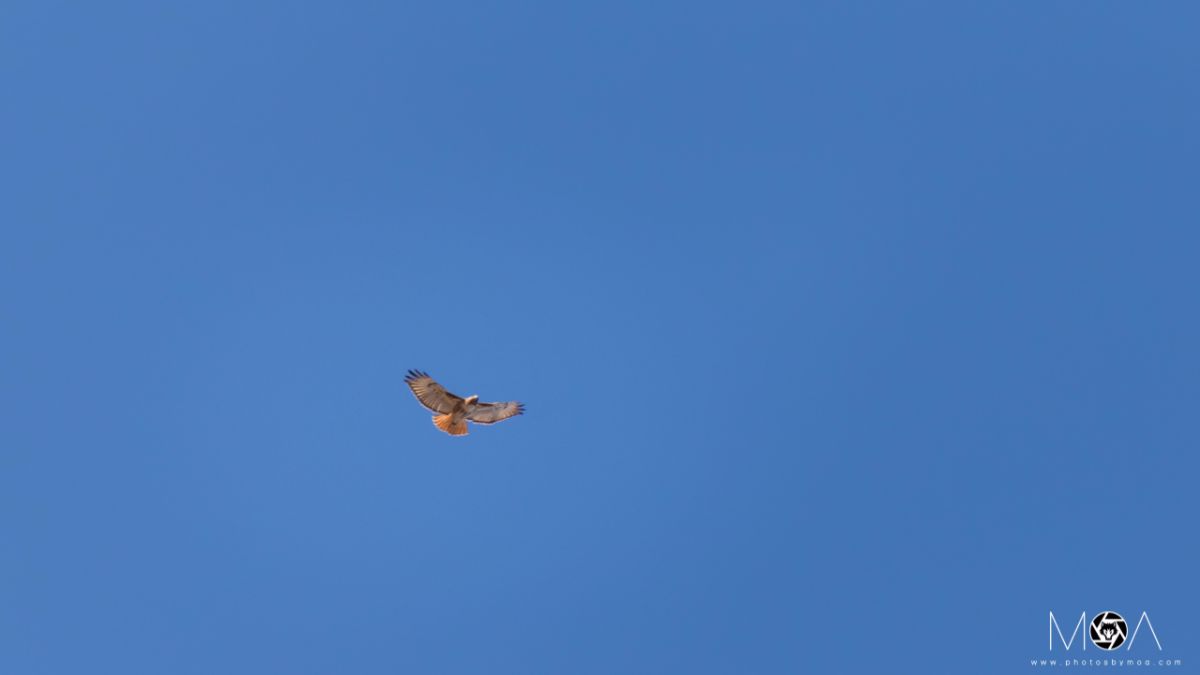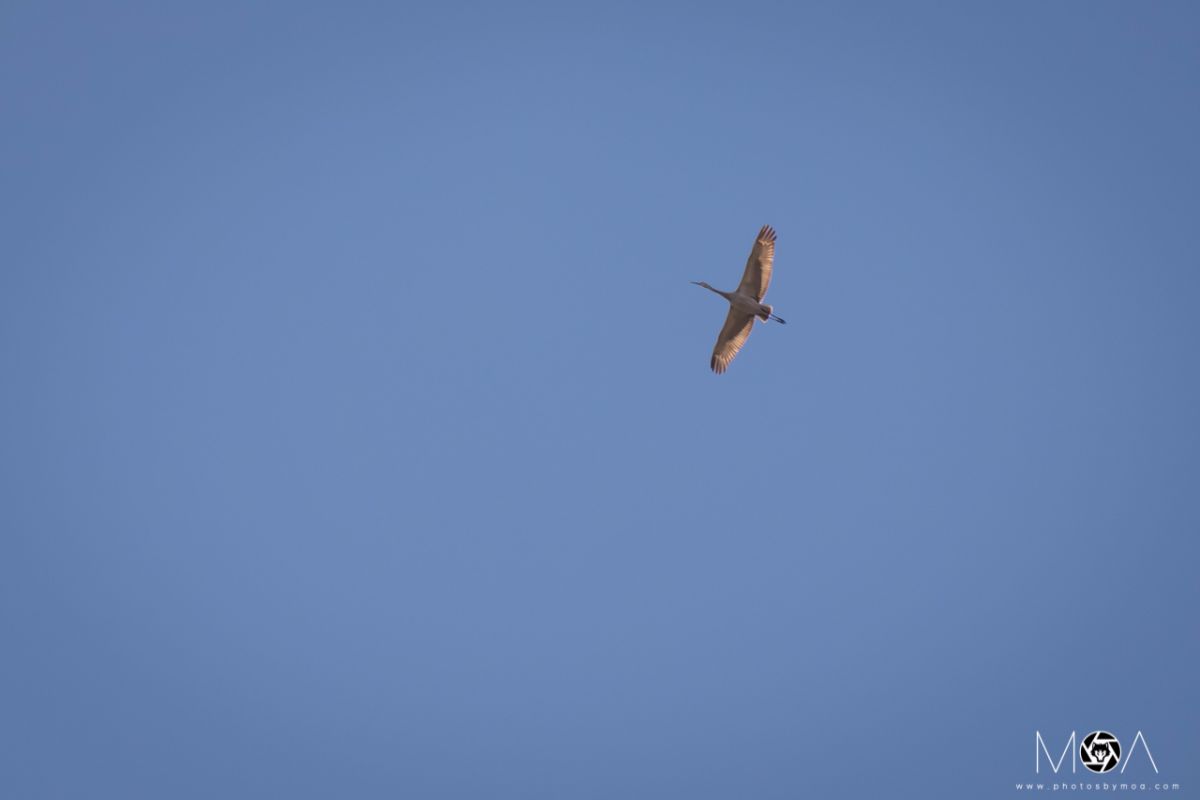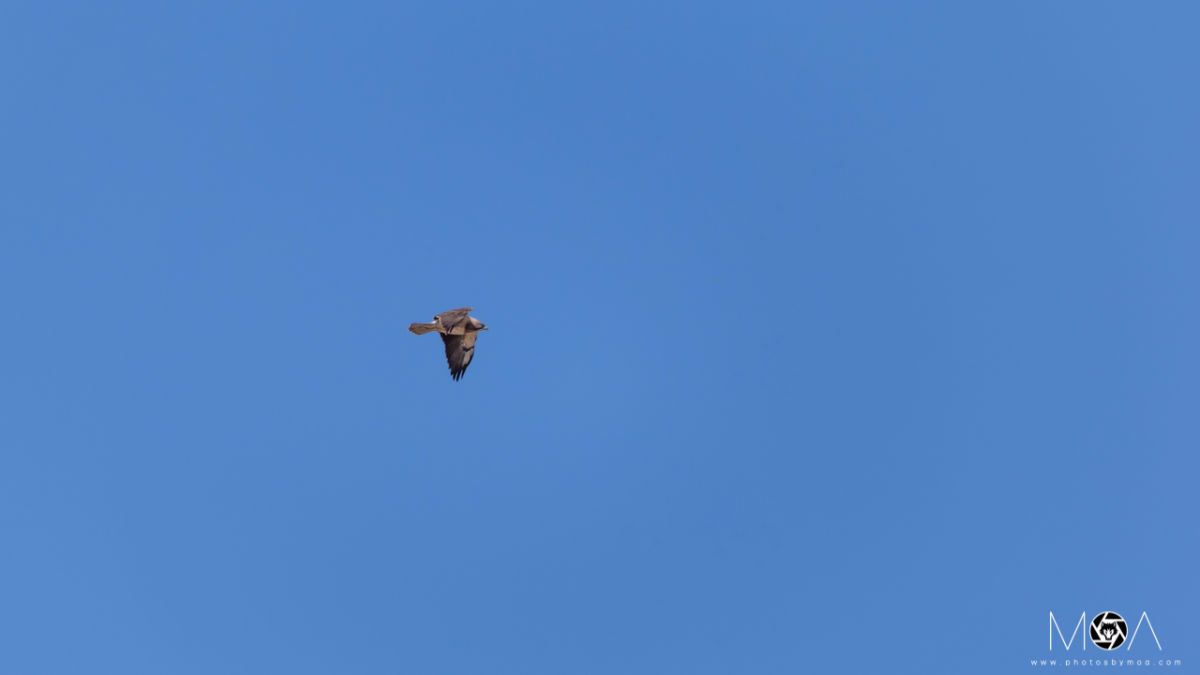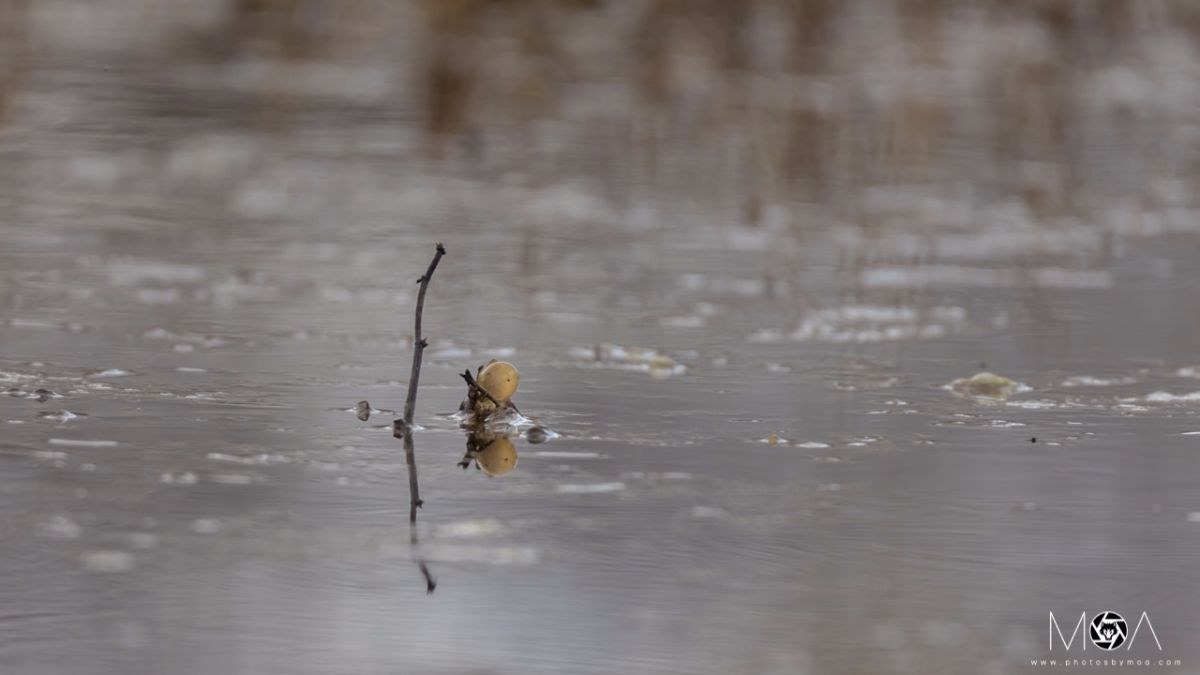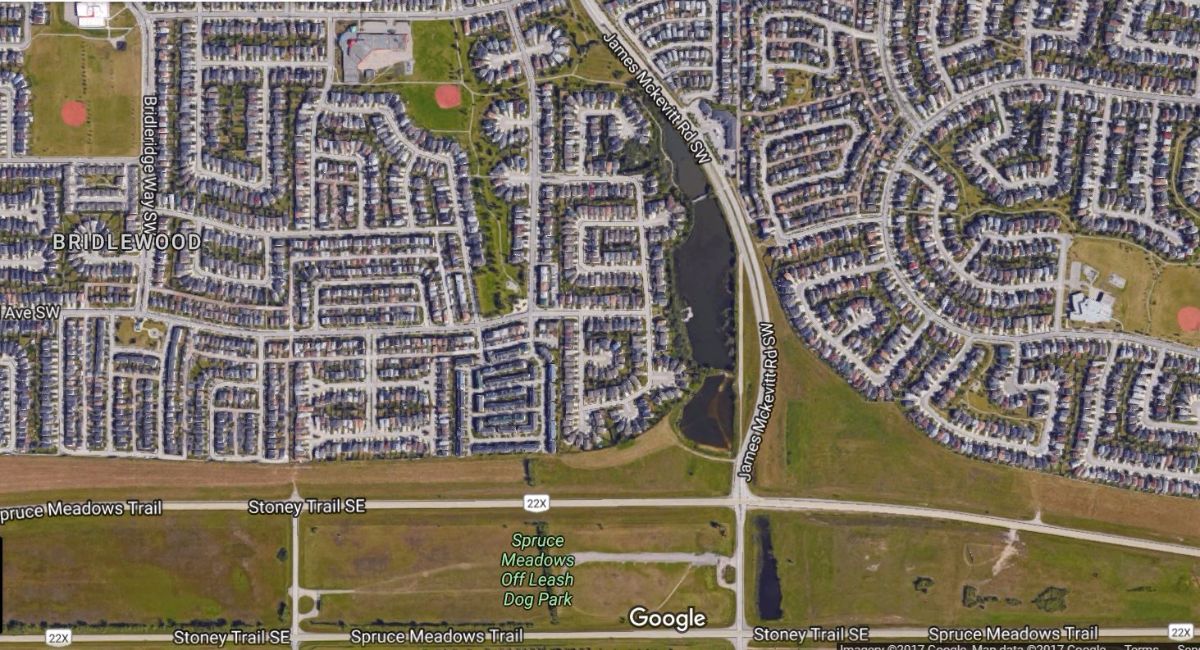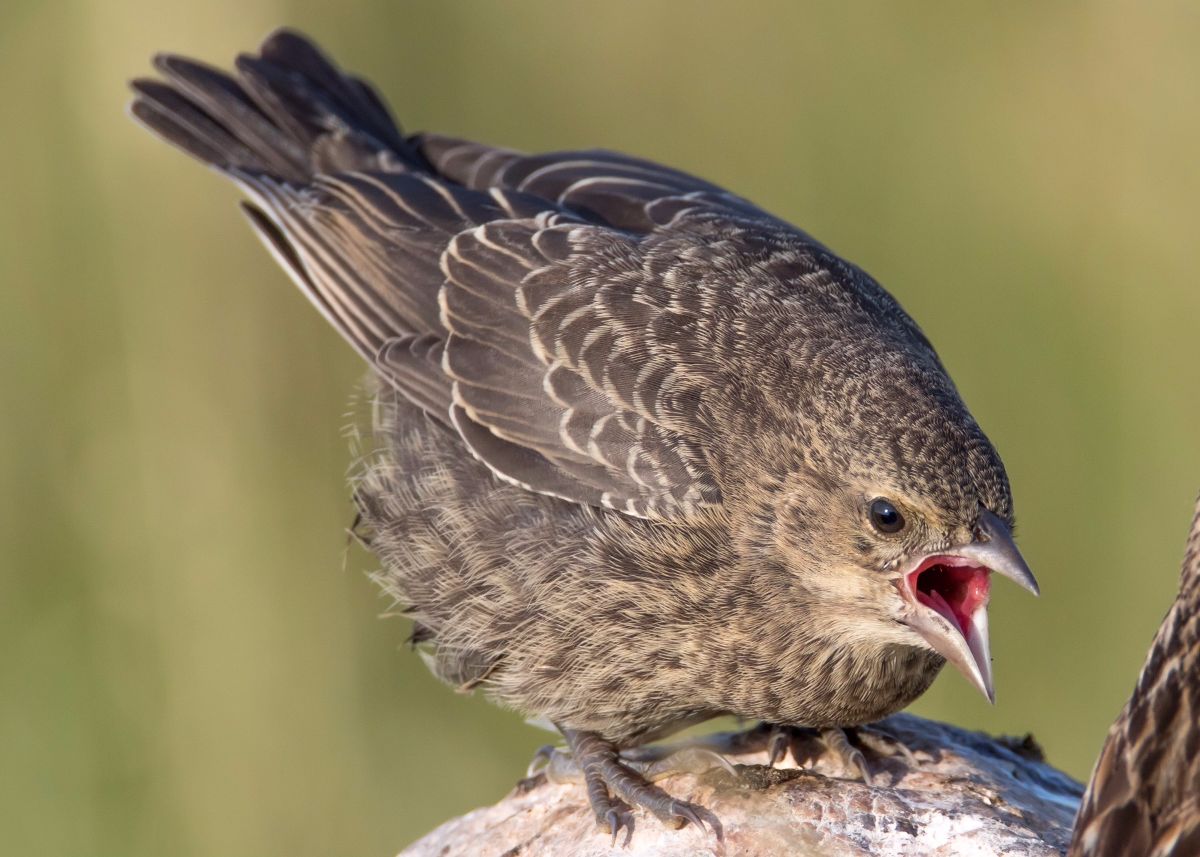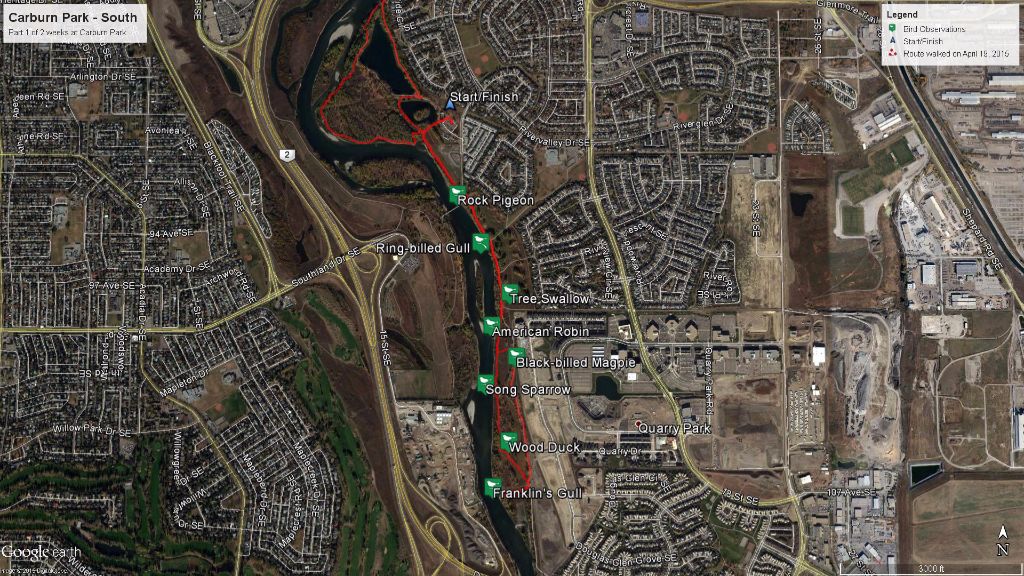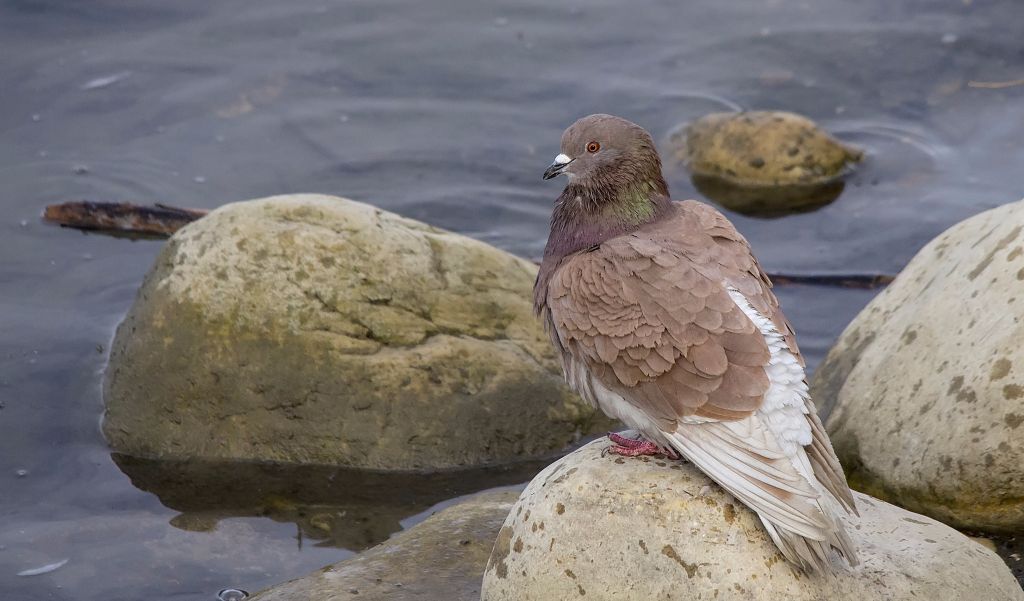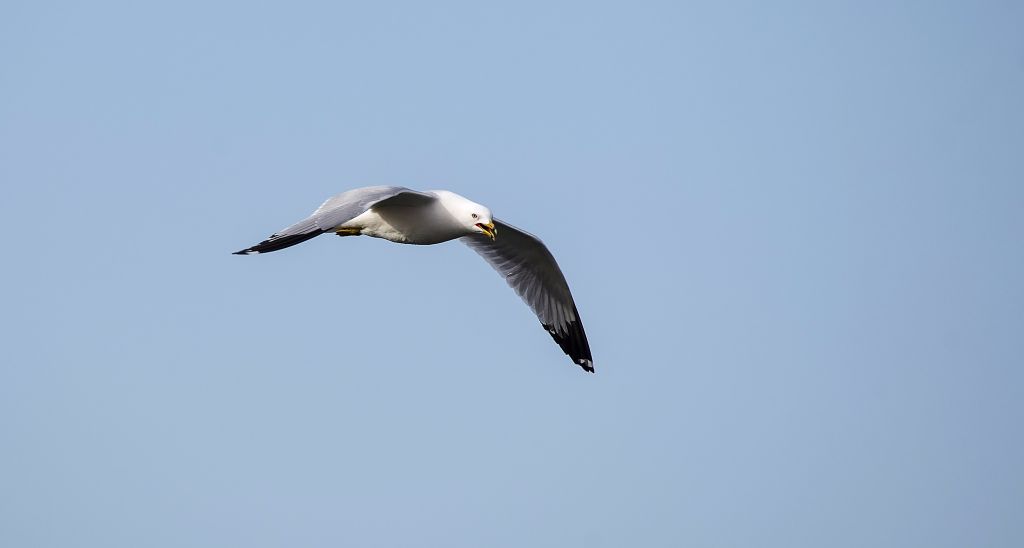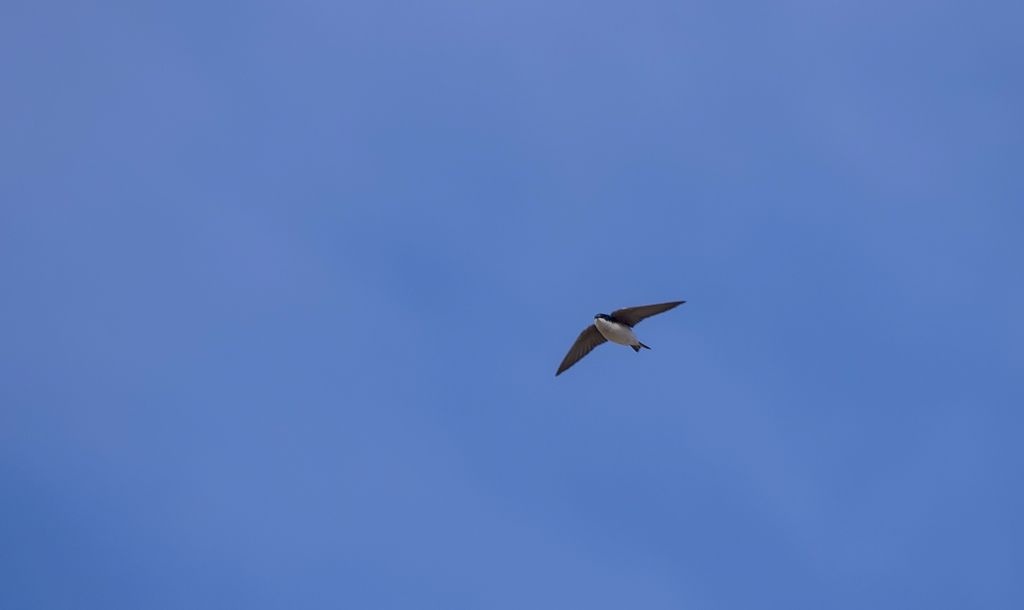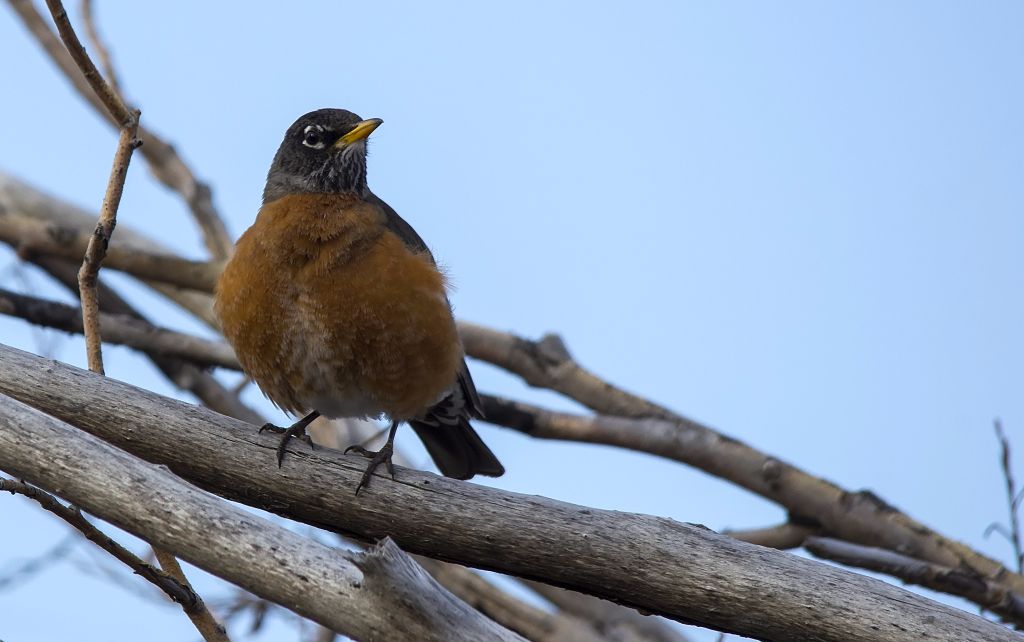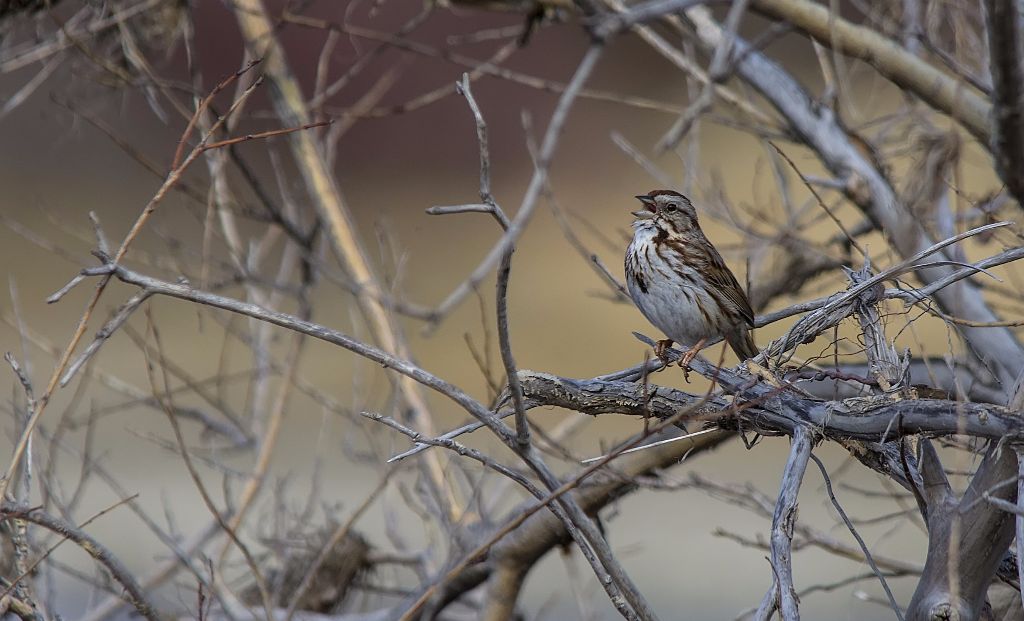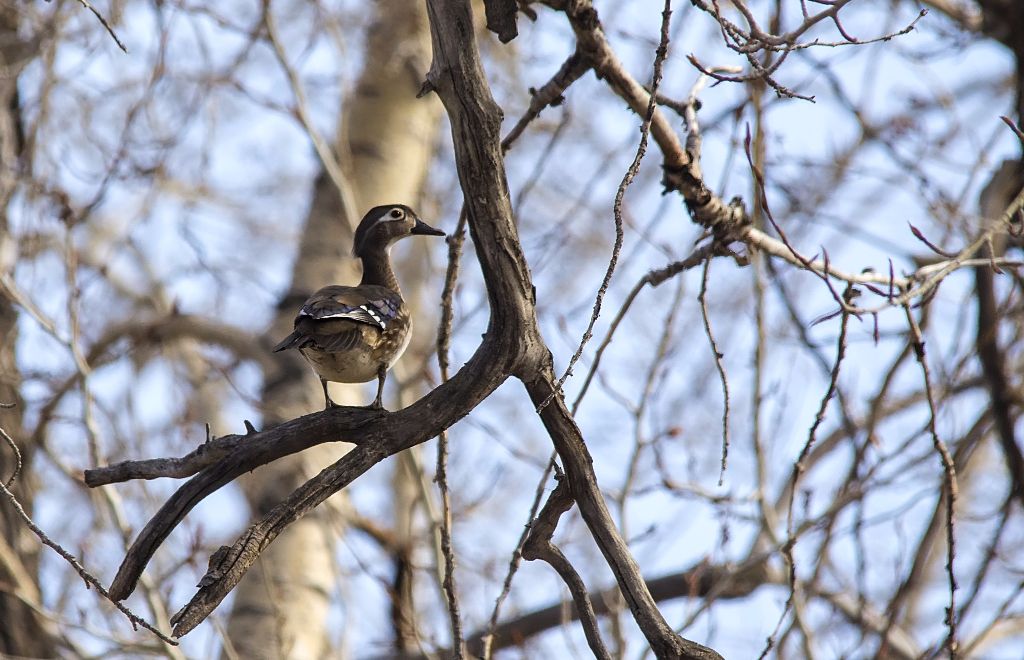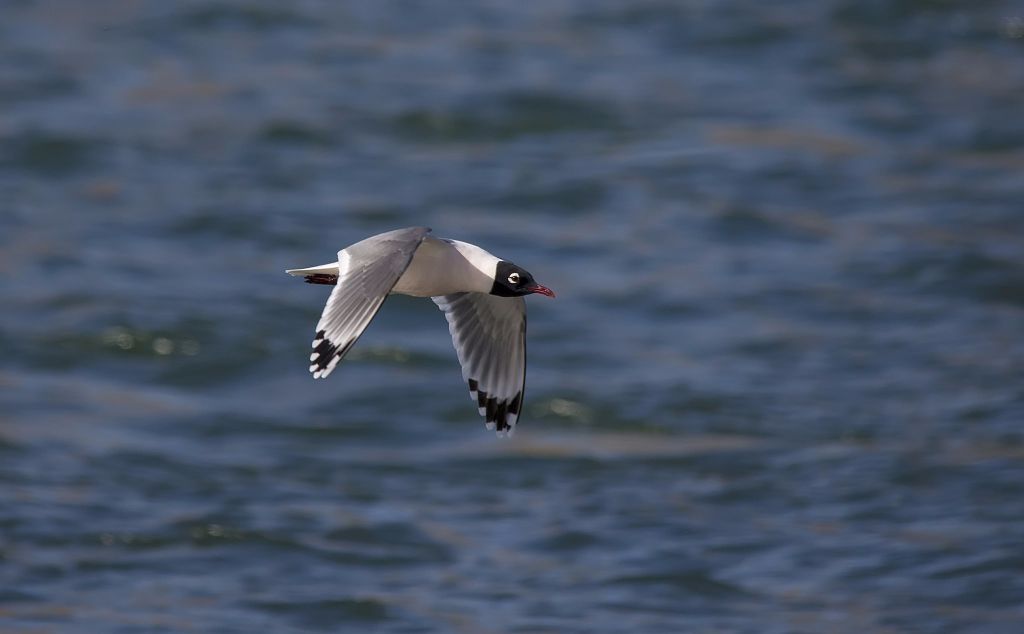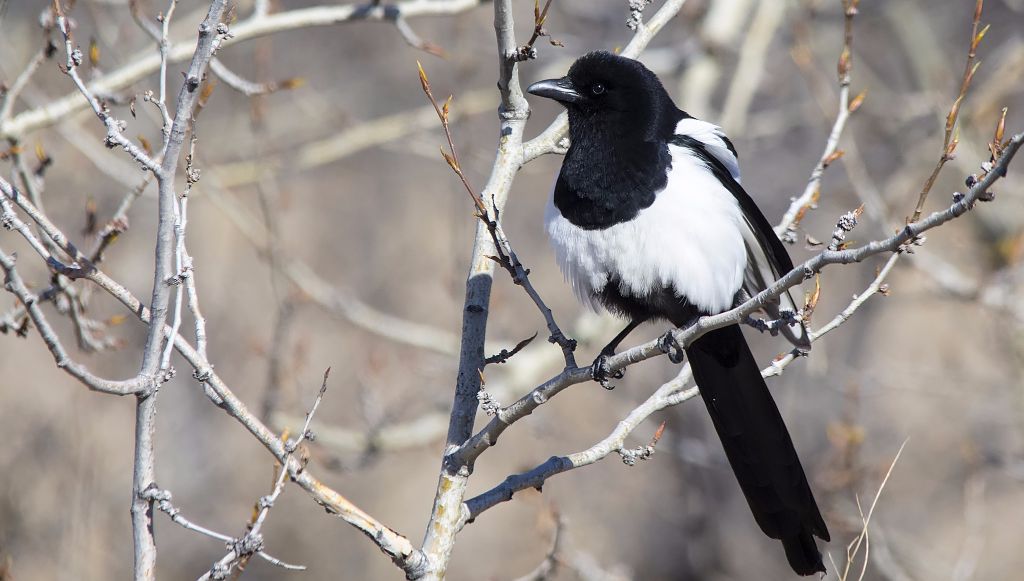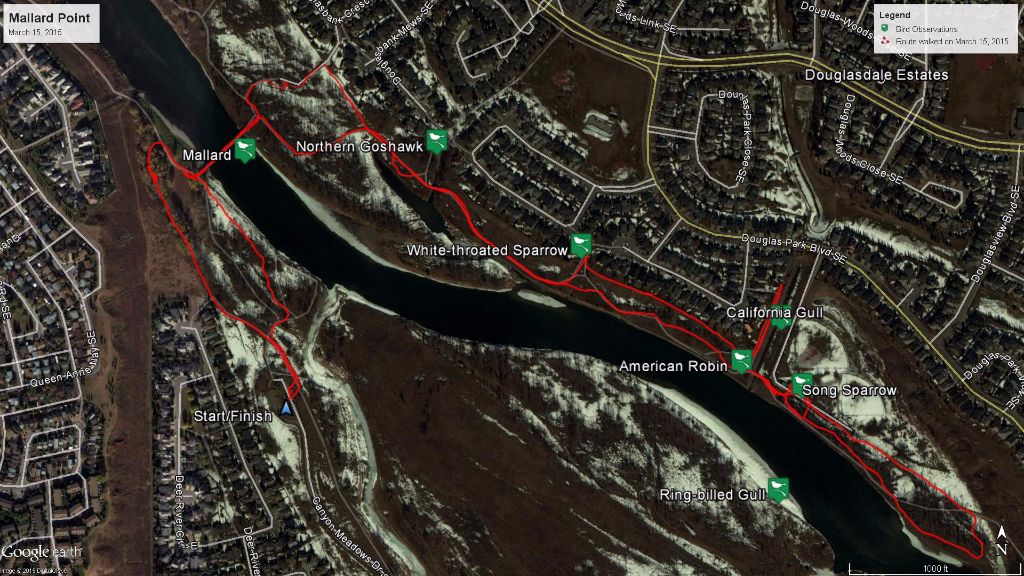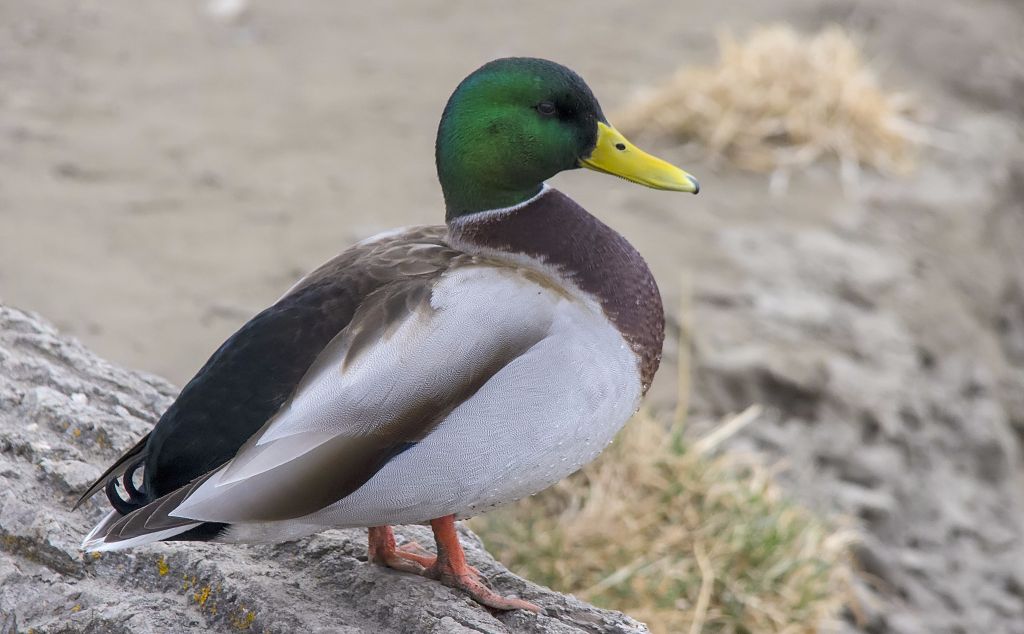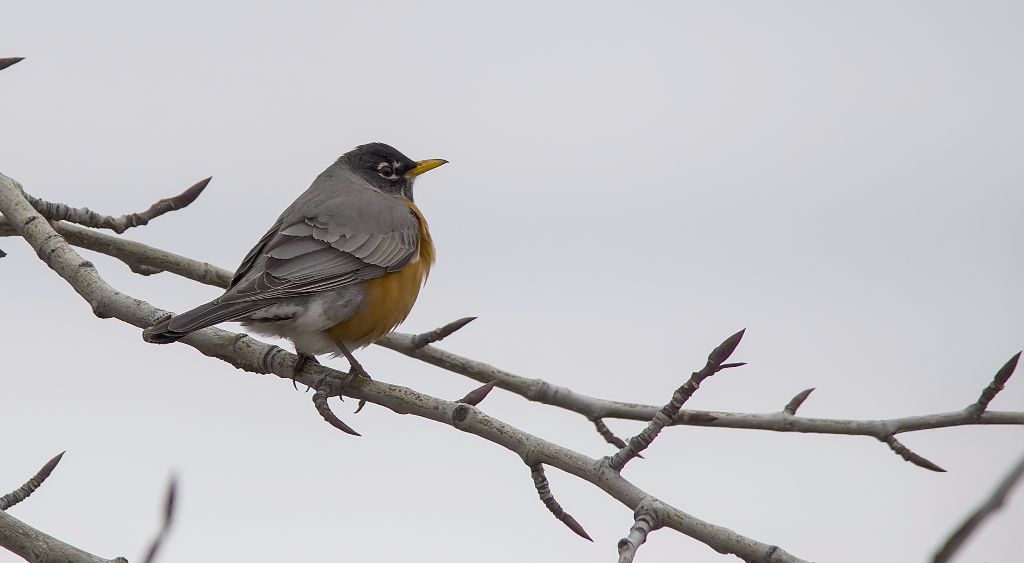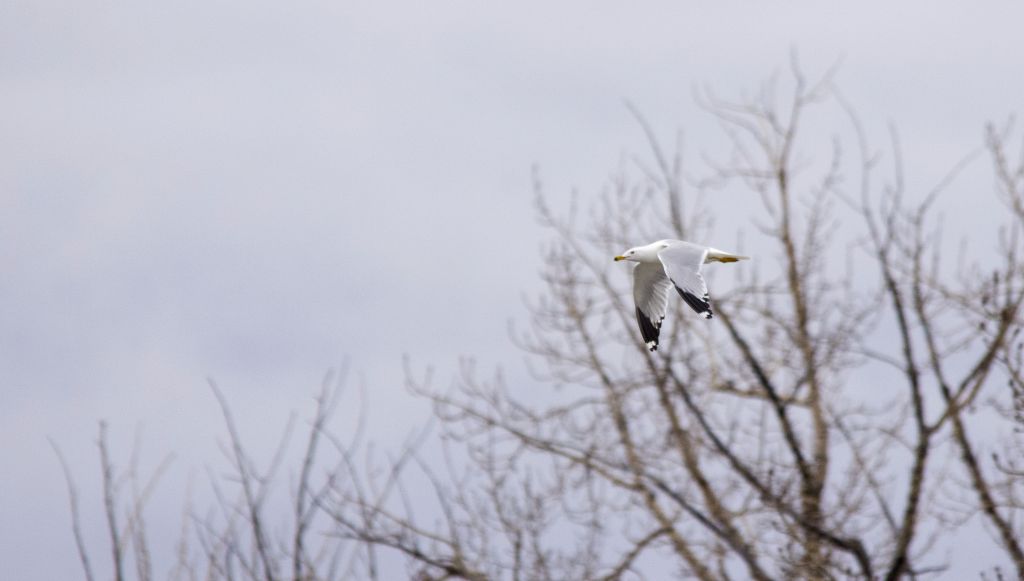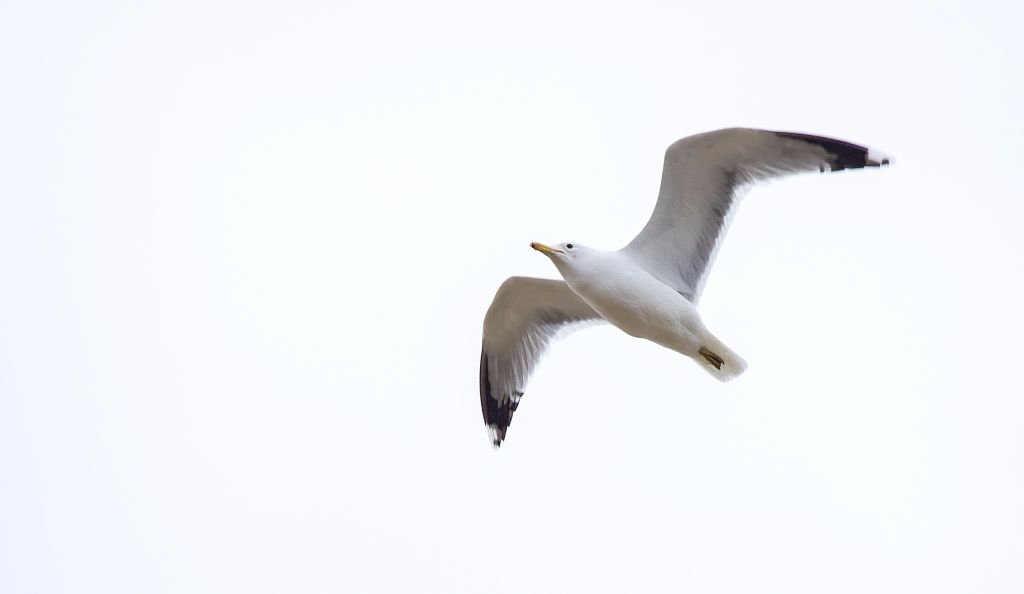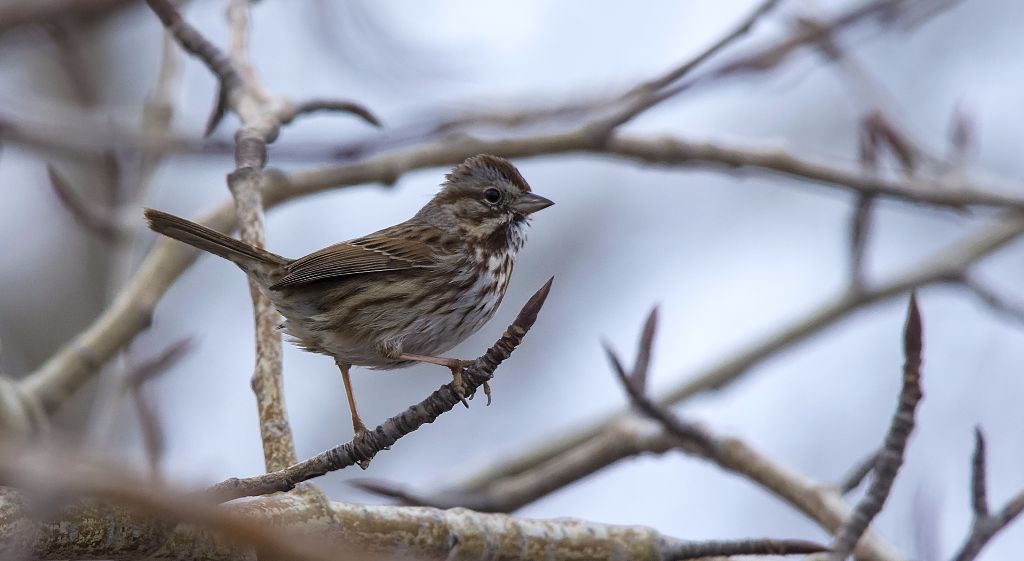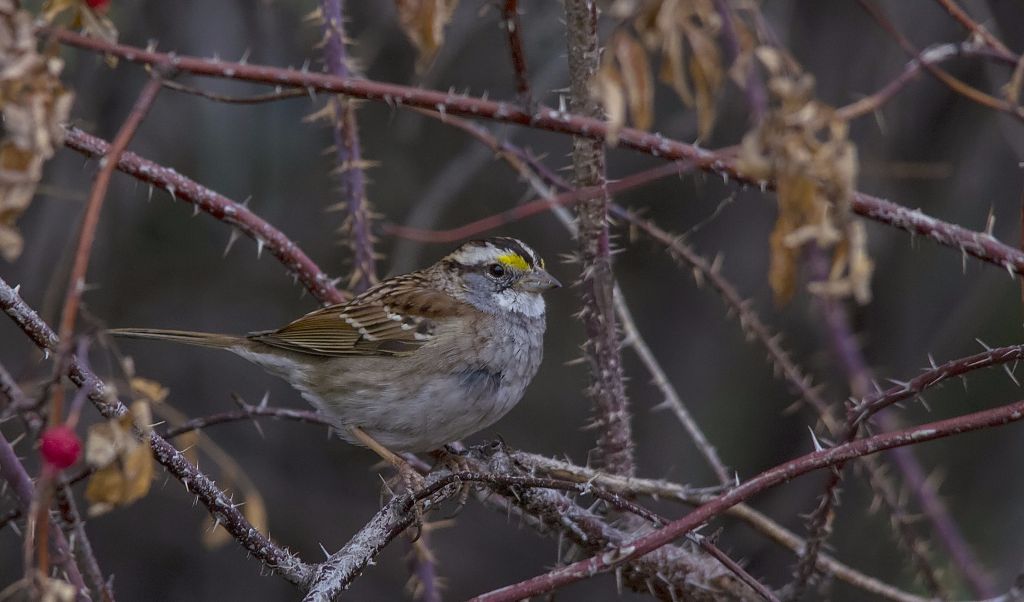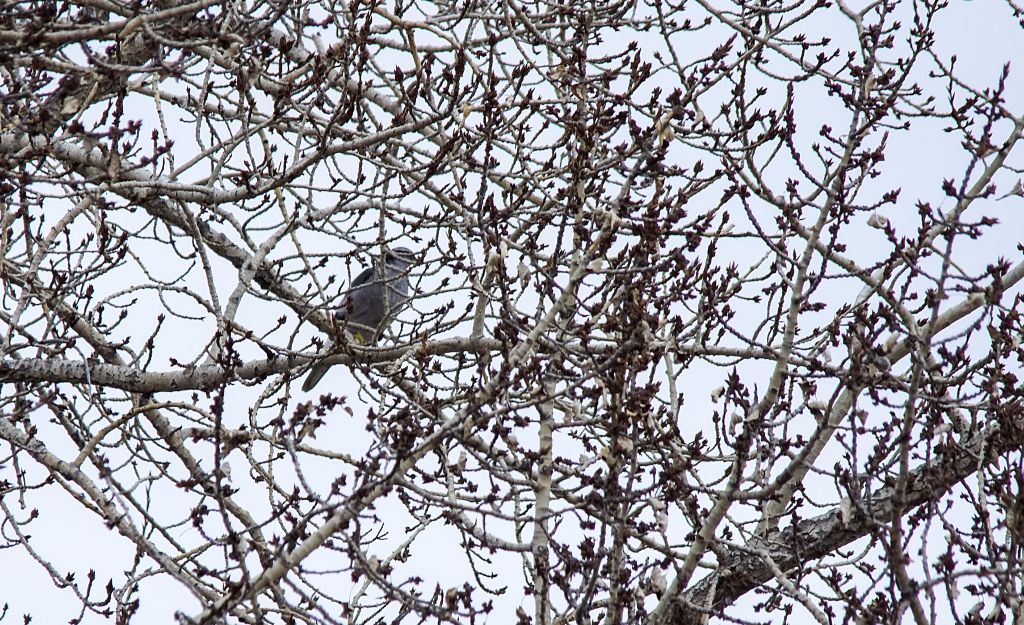Posted by Dan Arndt
My first week back leading the Friends of Fish Creek outings after being away at work for most of the month of September turned out to be quite the adventure, with a few really great finds.

Lafarge Meadows – October 4, 2015
The light was a bit dim early on, but it seemed as though the day would be productive as the first really impressive birds we found were a couple of Green-winged Teal, back in their striking breeding plumage. The poor light didn’t do them justice though.
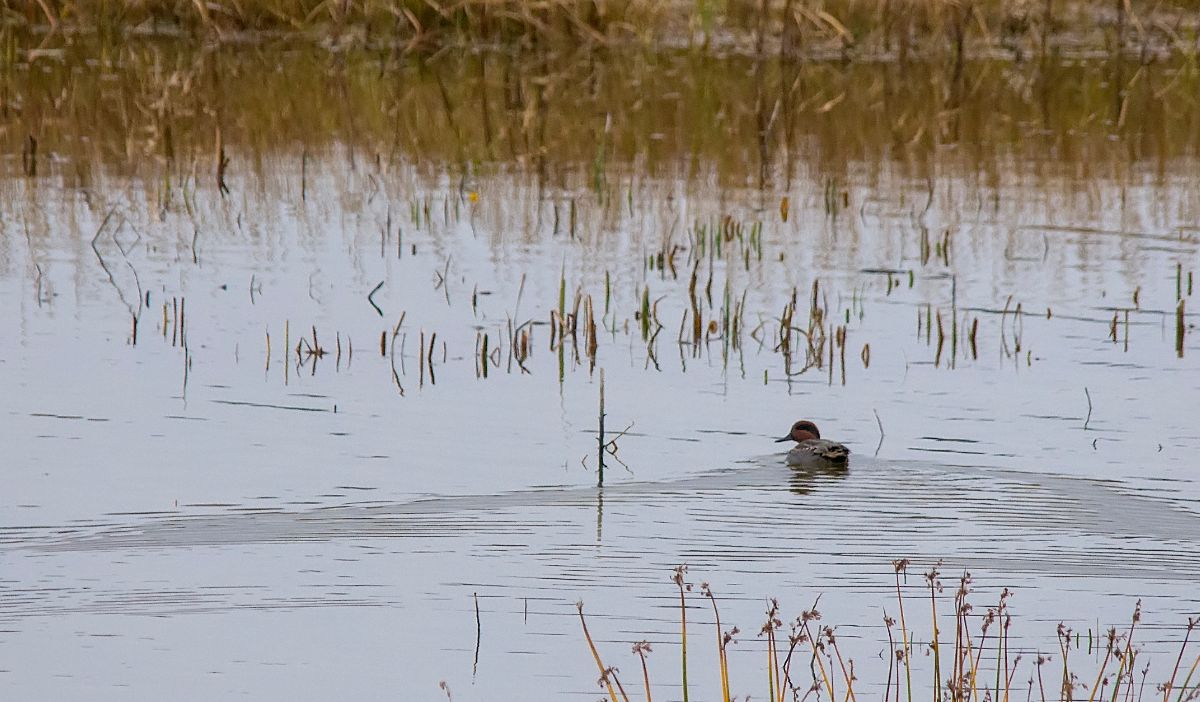
Green-winged Teal – [exif id=”14816″]
Not too far from him was a young Pied-billed Grebe, one of the seven we would see throughout the day.
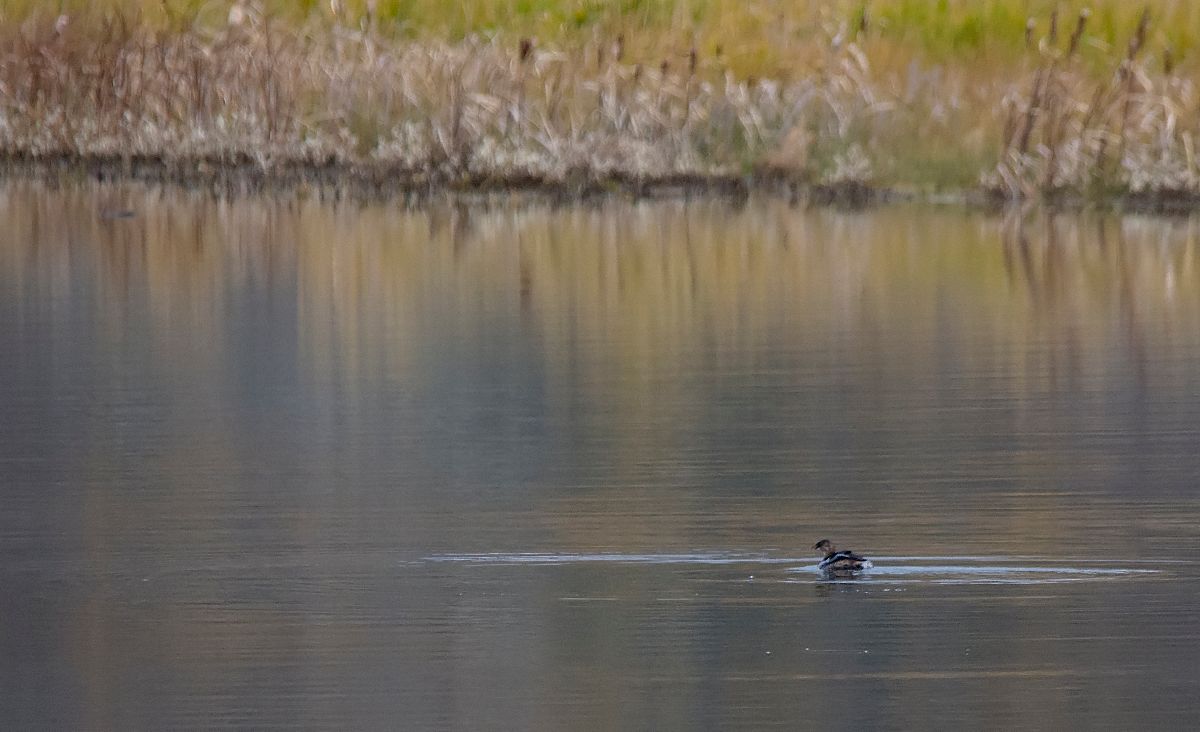
Pied-billed Grebe – [exif id=”14817″]
We followed the bank of the Bow River north at the beginning of our outing, turning up a Bald Eagle perched across the river in a tree. A couple of us remarked how this might have even been the same bird in the same tree as we had seen earlier this year in the winter course.

Bald Eagle – [exif id=”14818″]
We were a little surprised a few minutes later when we were passed by a lone American White Pelican, which we would see nine more of later in the day. I think this might be the latest I have seen these massive white birds within the city.
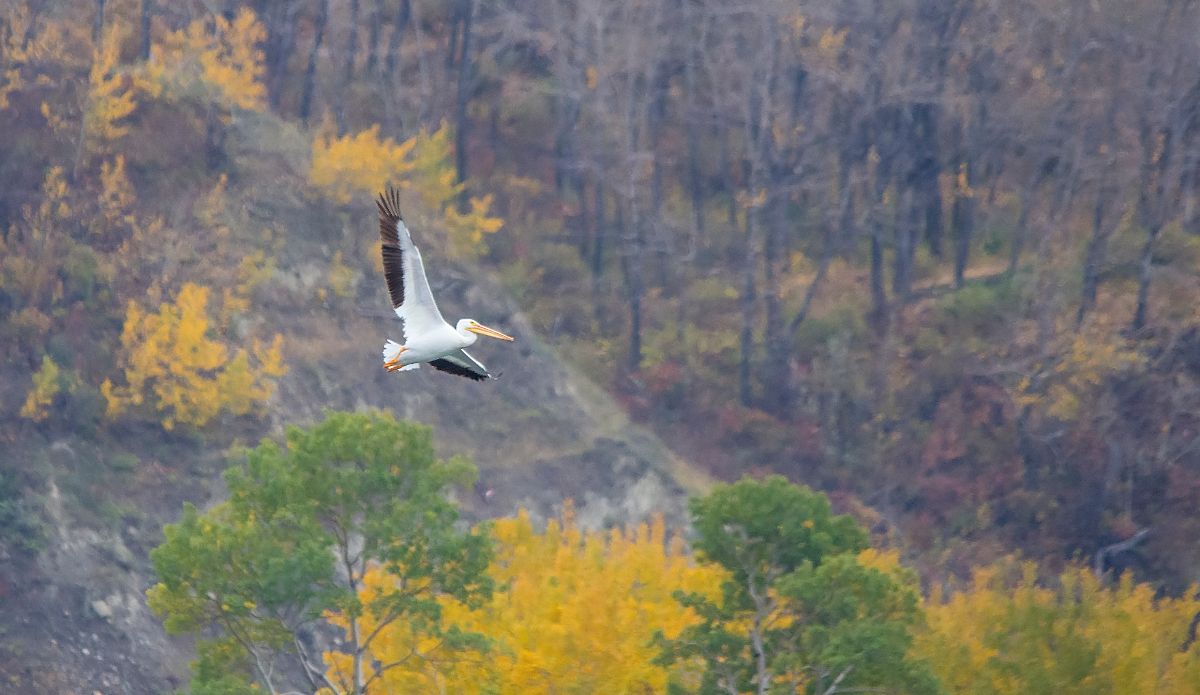
American White Pelican – [exif id=”14820″]
While he was flying by, we also heard a chip note of a nearby Yellow-rumped Warbler, another migrant that was foraging in the low trees and shrubs. 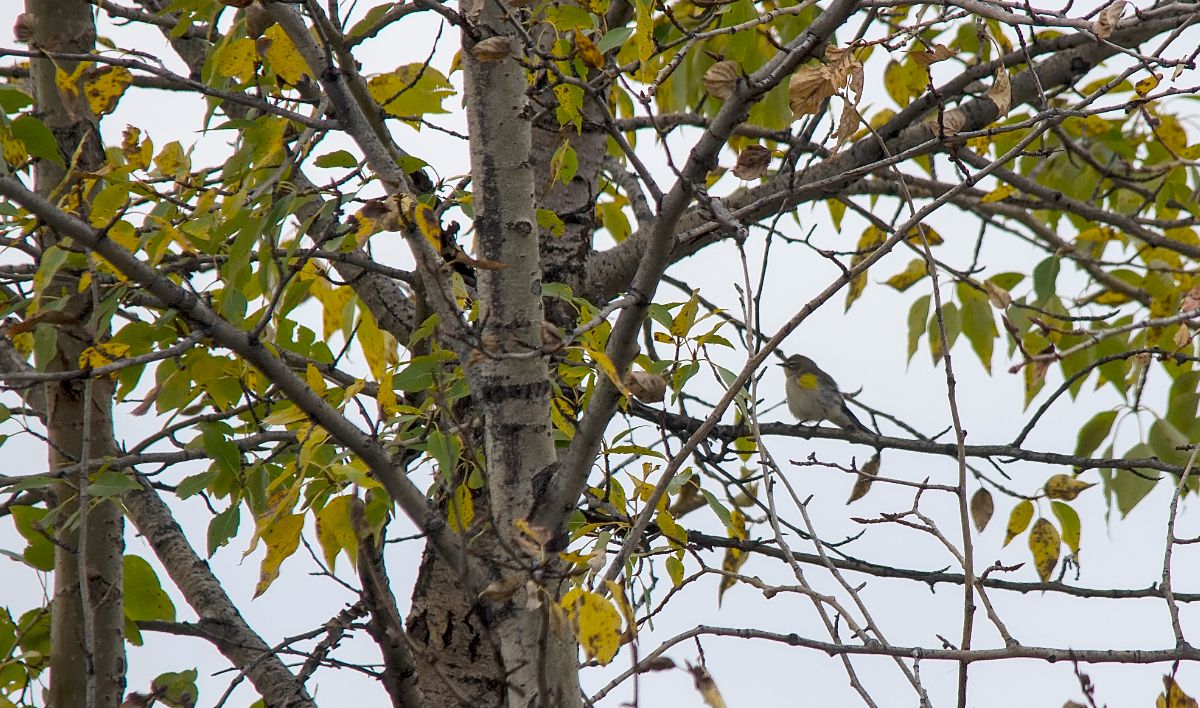
Yellow-rumped Warbler – [exif id=”14819″]
Things got a lot quieter for the next half hour or so, as we crossed the tributary stream and walked along the banks of the river that had been hardest hit by the flood two years ago. We were almost ready to turn around and head back to the south ponds when things began to chatter and chirp all around us. A pair of Downy Woodpeckers were the first ones to draw our attention.
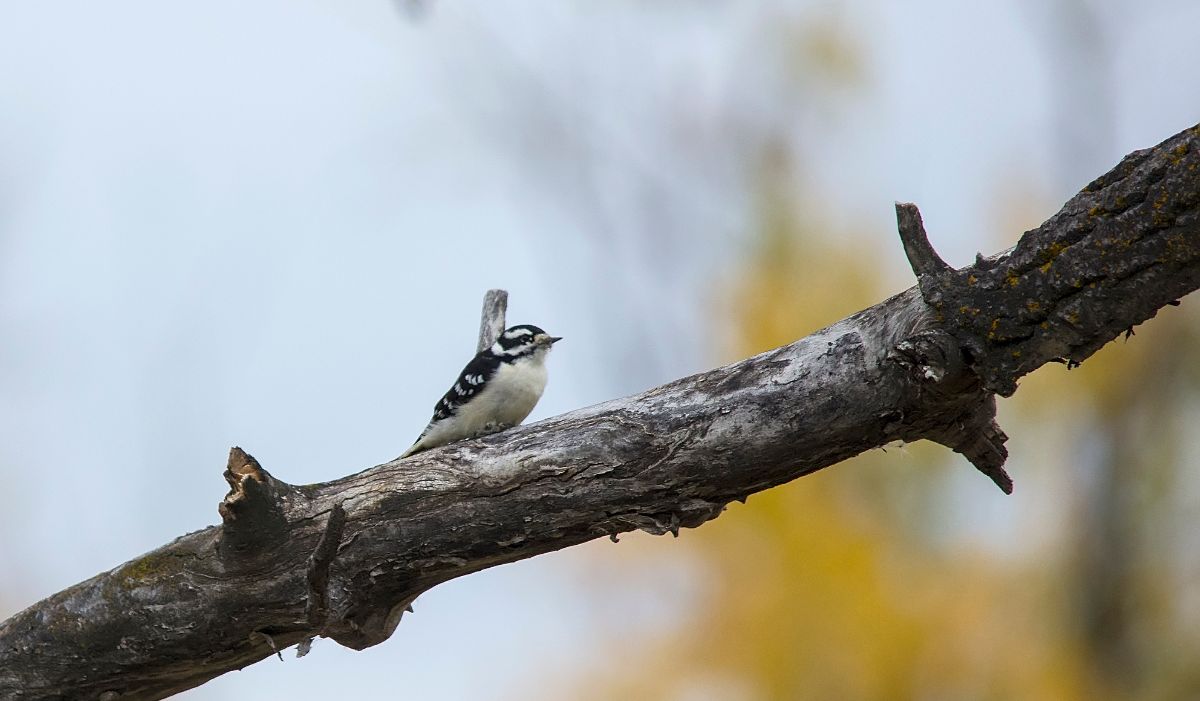
female Downy Woodpecker – [exif id=”14821″]
While we were watching her, we heard the chip notes of some sparrows in the nearby shrubs, and on investigation, we found a couple of Song Sparrows (and a Lincoln’s sparrow that we heard, but could not track down for the life of us!)
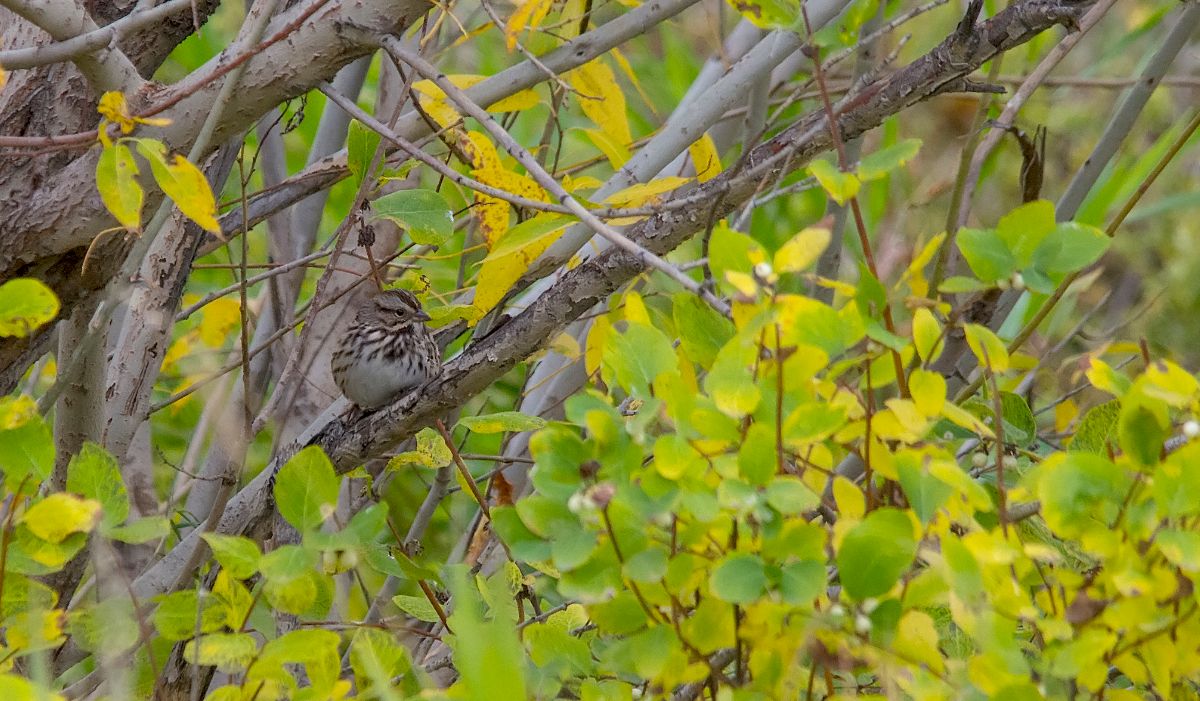
Song Sparrow – [exif id=”14822″]
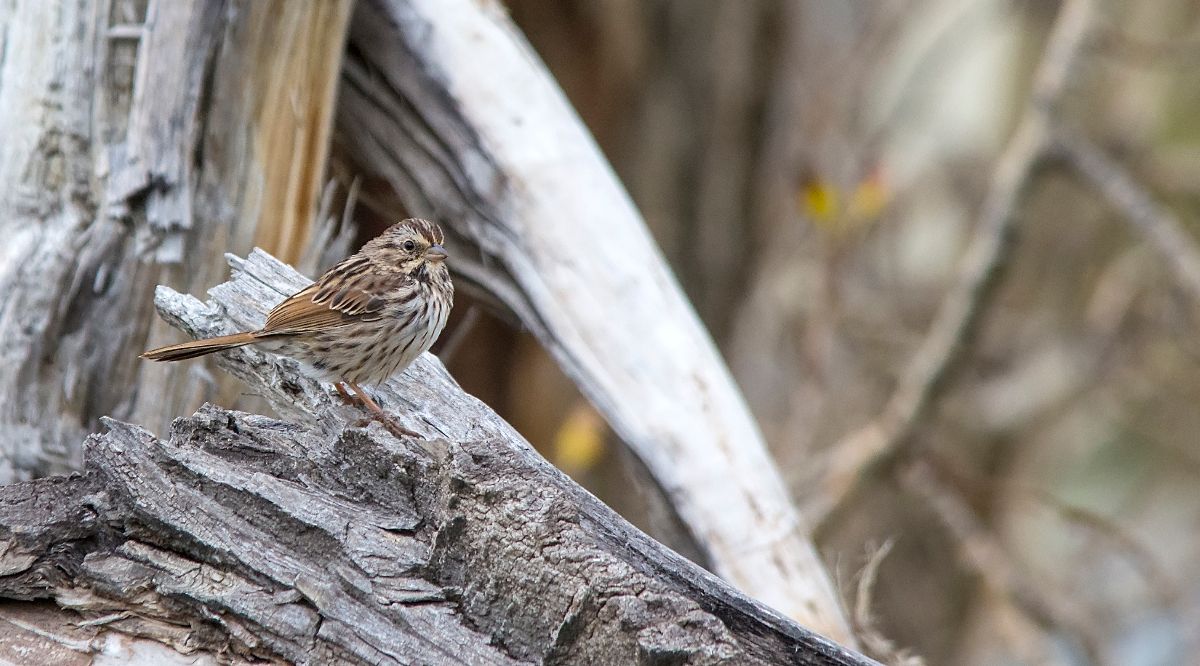
Song Sparrow – [exif id=”14822″]
The best sighting of the day (and maybe of the year?) was found while I was crouched down taking some photos of this dragonfly who was all but immobilized due to the cold, and hanging under a blade of grass.
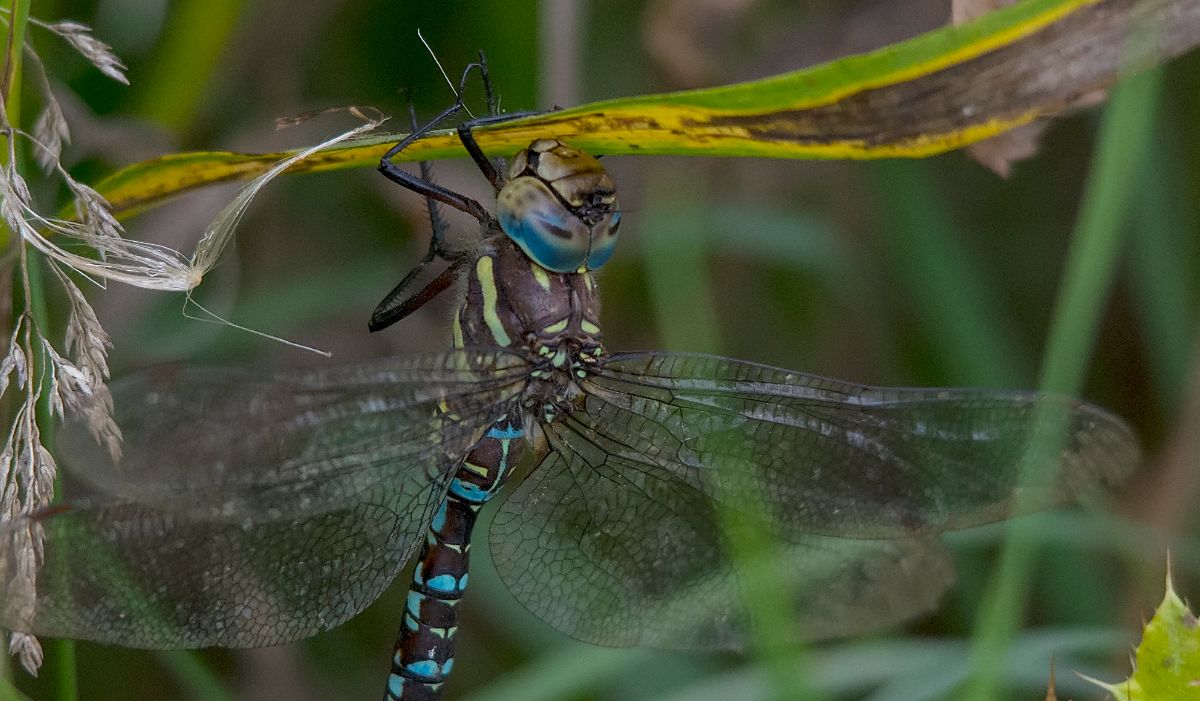
Dragonfly sp. – [exif id=”14824″]
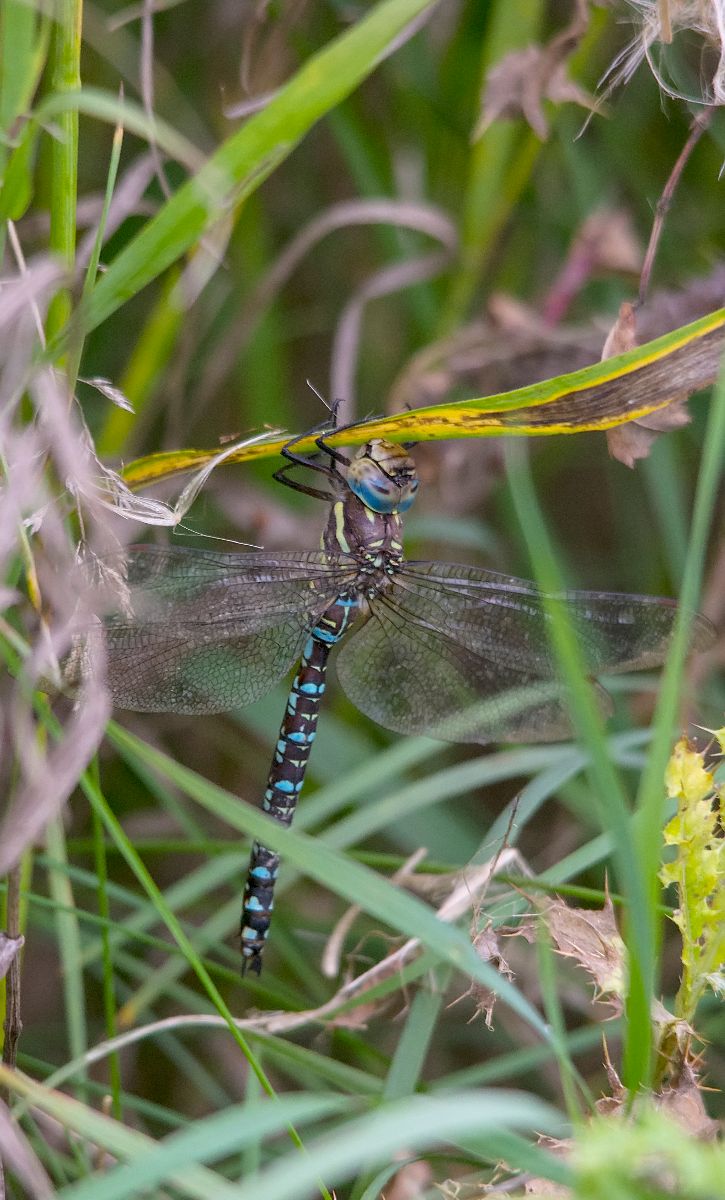
Dragonfly sp. – [exif id=”14825″]
While I was carefully focusing on the detail of this beautiful little insect, the call of “HOODED WARBLER!” from Bob Lefebvre came about fifty meters south, as much of the group had continued on and were carefully scanning a group of songbirds foraging in the low brush. After a good half hour, I did manage to capture a few images of this quick little skulking bird, though I was more than happy to just see it!
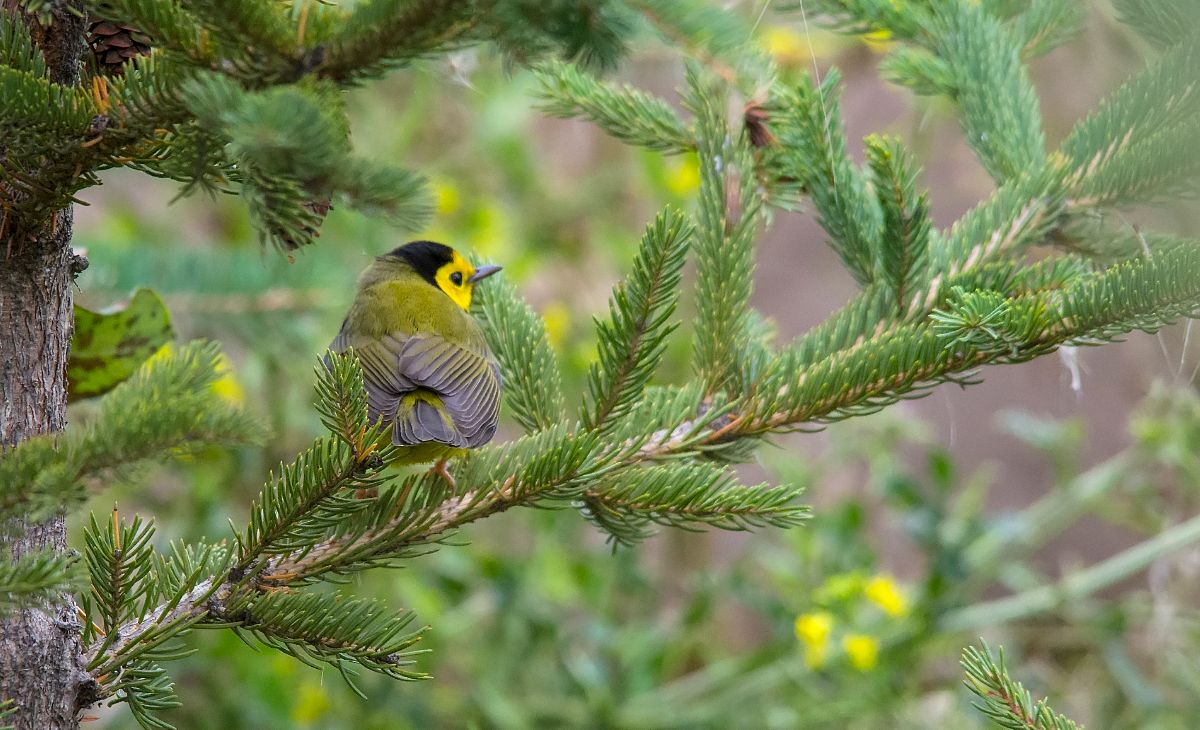
Hooded Warbler – [exif id=”14826″]
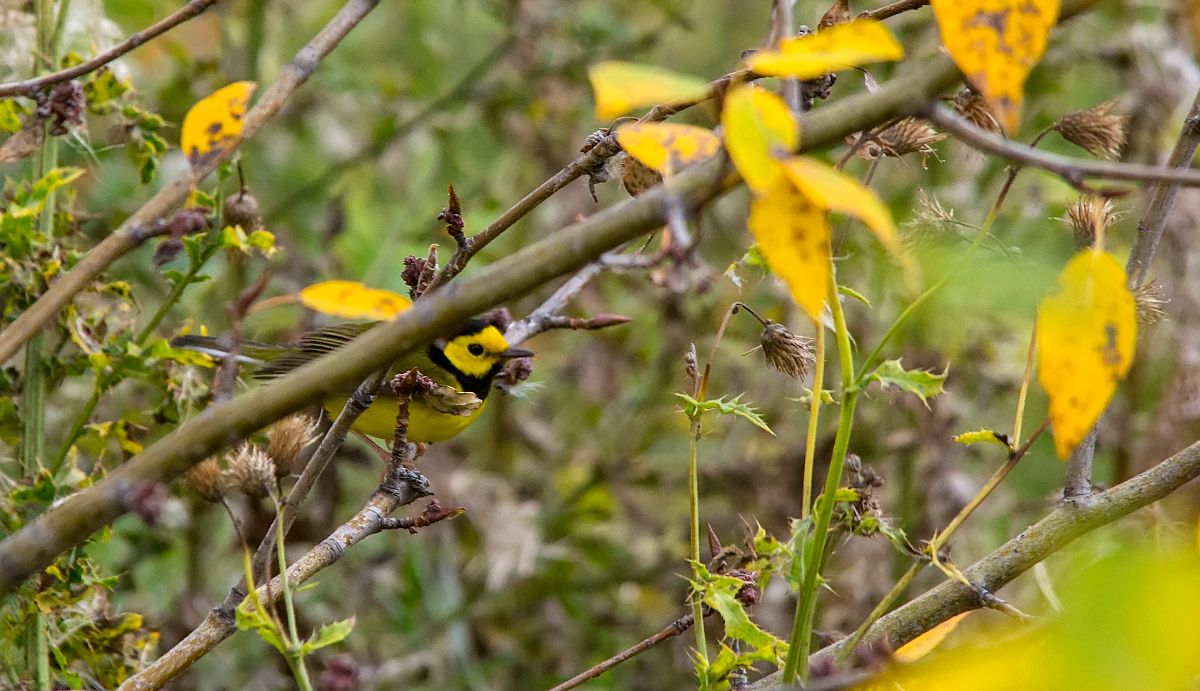
Hooded Warbler – [exif id=”14827″]
It was an incredible find, and we all left quite satisfied with how the day had turned out. We headed back to end our walk and stopped briefly to enjoy the antics of the American Coots and American Wigeon fighting over the vegetation they were picking up from the bottom of the south pond.
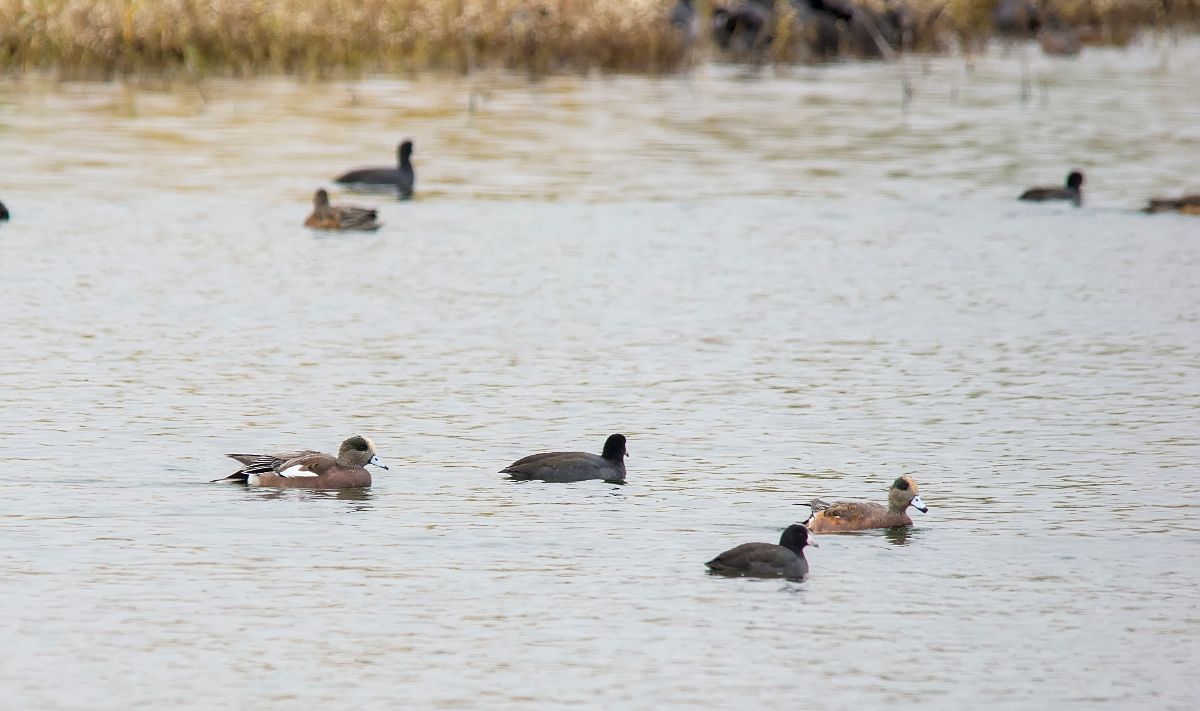
American Wigeon and American Coots – [exif id=”14828″]
So all in all, I’d say that my first outing back was a rousing success!
I did manage a few outings during the next week to the Bow River Irrigation Canal, so keep an eye here for that next Tuesday!
Have a great week, and good birding!




